For as long as I can remember, art and creativity, has been a huge part of my mental health journey. Whether it was spending hours trawling through Tate Britain, awash in colour, doodling aimlessly in textbooks, or becoming living, breathing art, creativity was an anchor in a world conditioned by chaos. I found that creative expression allowed me to find temporary solace, when my world was falling apart. A life where sorrow, darkness and demons lined up on every street corner, cloaked in invisibility. Though I couldn’t draw, there was something that was soothing about drawing random squiggles, patterns, and shapes, as I attempted to draw, paint, and scribble away the anxiety that was eating me up inside. The Depression, embalmed in cloying threads, would converse daily with anxiety, trying to overpower the art that would boost my mental health.
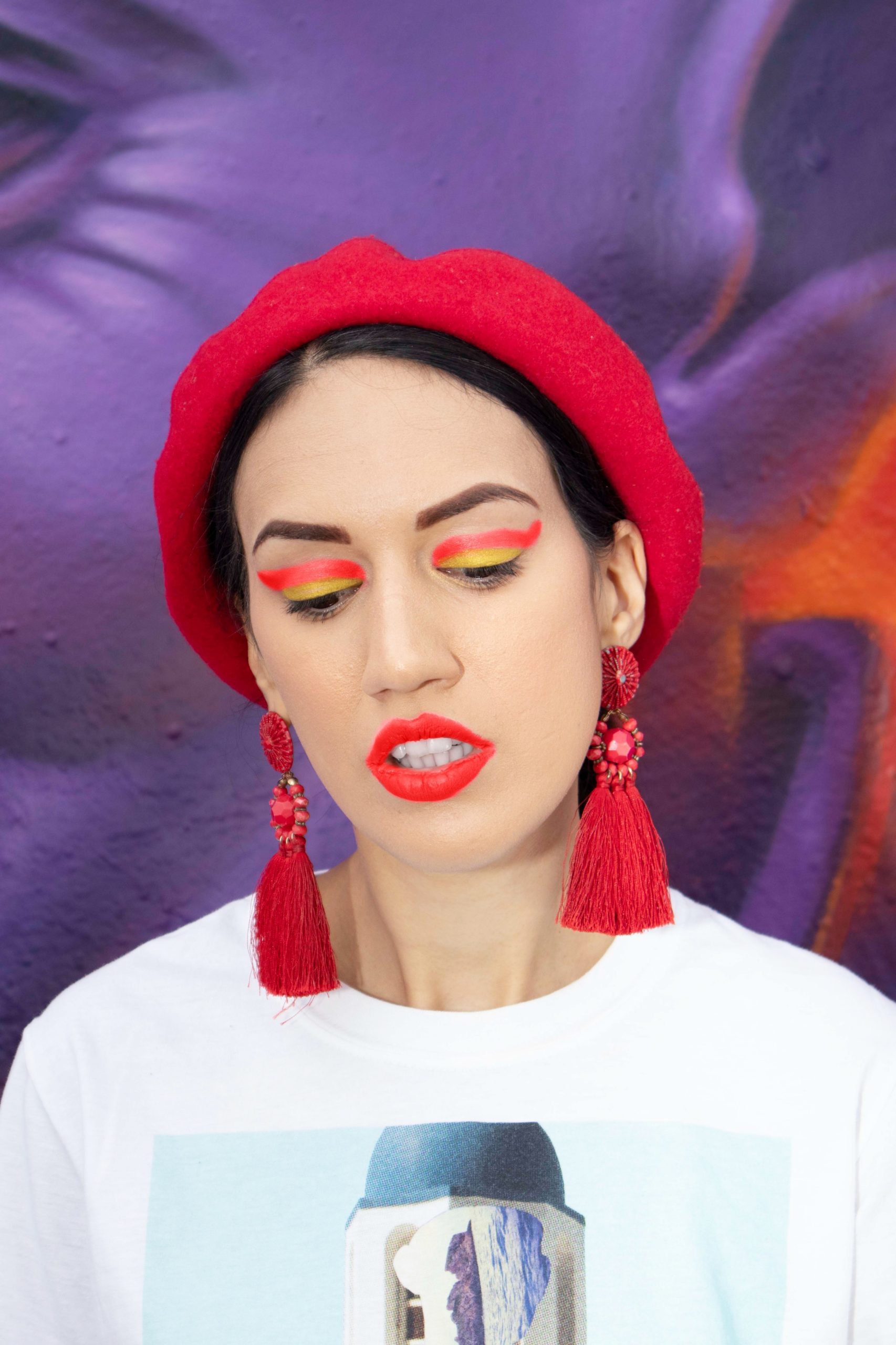
At times it succeeded, pulling me under, like Roy Lichenstein’s ‘Drowning Girl’, a cultural masterpiece of melodrama. A slice of pop art history, it reminded me of how I felt at times, overwhelmed, underappreciated, yet still vibrant, even in the final moments. It was almost like I was playing out a parody version of myself, who would succumb to the dark depths that were dragging me down, swept into melancholy, which engulfed me hungrily. But that was not the case, the real me, though struggling with depression, and terse with anxiety, would fight tooth and nail to stay afloat. Little by little the rain clouds that blocked the light parted to reveal deep blue skies, with smiling wisps of white, ember of sun shining brightly with joy. Art was a huge part of that journey, showing me a beautific world that made me feel alive.
How Art Helped Me Come To Terms With My Mental Health
In surrealism I found the absurdity, Salvador Dali’s ‘The Persistance of Memory’, living rent free in my head. The soft, melting watches, parodied a Camembert melting in the sun, juxtaposed with a human-like monster in a dream-like state. The Surrealist movement, gave me the opportunity to escape external structures, and explore unconscious interiors, that hadn’t been awakened. It enlightened me to parts of myself, the good, bad and ugly, that my mental health illness disguised. My eyes were wide open, I could see in colour again, no more black and white taking away my creativity. No, art would always boost my mental health, with or without mental health issues. Whether I was viewing or studying art, marvelling at paintings, street art, murals or sculptures, art was a huge part of who I was, and that wasn’t about to change now.
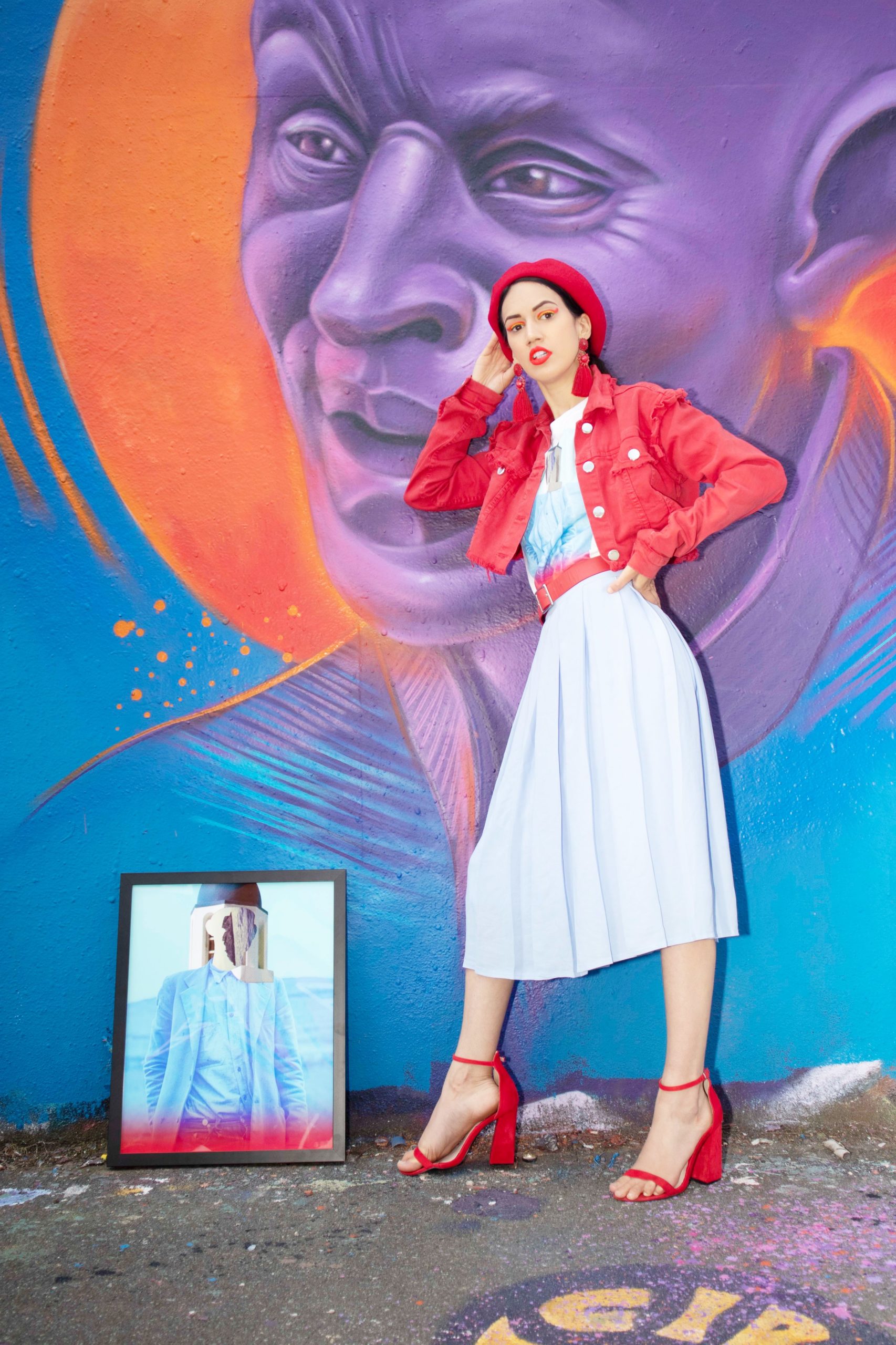
Art can boost your mental health in a number of ways. Whether you have Depression, Anxiety or OCD, art helps you find yourself.
Cubism was another avant-garde art movement, that affected me profoundly. A fan of the late great Pablo Picasso, I loved how Cubist art reduced, and fractured objects into geometric forms, and then realigned these within a shallow, relieflike space. To me, the shapes challenged and shaped my understanding of mental illness, and how others saw me. It represented ‘neural cubism’, a depiction of how brain, and mental health disorders were represented in art, coded in shapes, geometry, and abstract expressionism. I never saw art as linear or picture perfect, so the raw, imperfections of cubist art, spoke to me, especially Picasso’s ‘Blue Period’. Created in the monochromatics of blue, and green, Picasso was clearly suffering from Depression, after the death of his friend, and I resonated deeply. Finally, here was an art period that spoke to my personal struggles, La Mort de Casagema particularly poignant.
But it was when I discovered street art, that my heart skipped a beat. It stood for freedom and creativity, art beyond the confines of art galleries, state houses, and private exhbitions. Here was art that was for the people, relatable, impressionable, rugged round the edges. There was no rules, or restrictions in street art, but a blank canvas where we could express ourselves authentically, free from snobbery, or judgement. Scrawled graffiti on Shoreditch disused trains, blown up street art murals on Hanbury Street. Political sculptures, and memory shrines, railway arches lit up in a sea of colour. Spray paint, texture, non-linear expression, a colourful world where happiness prevailed. From grief and loss, to panic attacks, political revolutions, tributes, and romanticized portraits of joy, there were no limits to the topics that street art covered. What I loved about street art was how unconventional it was. Like pop art, surrealism, and cubism, street art played with the boundaries of what it meant to create art, so far gone from the norm.
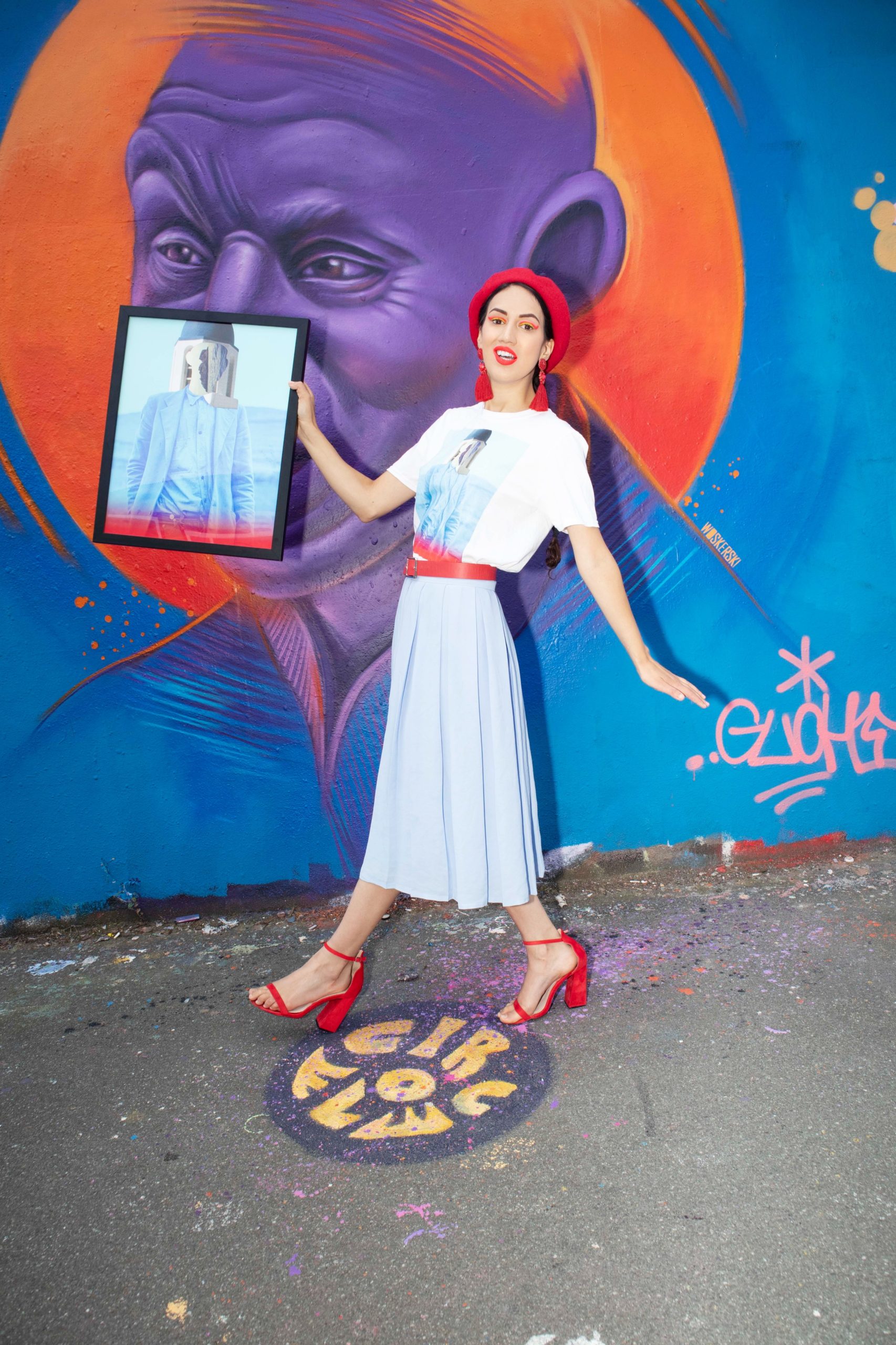
My love for art, and how it would boost my mental health, meant that I craved beautiful paintings, sculptures, and mixed media in my home. Even in the room that I rented in London I made it my own, a hodge podge of art eras, that alluded to my love of colour. Whenever I felt burnt out, overwhelmed, or was struggling to calm down after a panic attack, I would meditate under the welcoming glance of my paintings, breathing in the creativity, colour, and passion, that was a balm to my wounded heart. In this moment of stillness, the mental lacerations criss crossed against my chest would fade, guardian angels, that would protect me against the storm. It was contemporary art from Nuinx that would be my saving grace in the last remenants of lockdown, a welcome artistic escape.
It filled my home with warmth, creativity and originality, a place where I could unwind mindfully, my senses engaged. It was calming yet stimulating, original contemporary art that struck out with surprising and thought provoking synthesis. I loved how Nuinx’s art was a tool for social change, that allowed me to think outside the confines of my mental illness, and see the bigger picture. Cultural creations that combined historic, iconic and contemporary images, a tribute to human interaction, from which we could all benefit from. It was art that evoked critical thinking, no longer passive, an art brand that helped me face my mental health issues head on, with kindness and grace. It was not designed for a political body to create an artistic statement, but for real people like myself, who wanted dynamic art that would create a positive impact in their lives. It was clear to me, and the people who came to stay with me that Nuinx art helped boost my mental health in more ways than one.
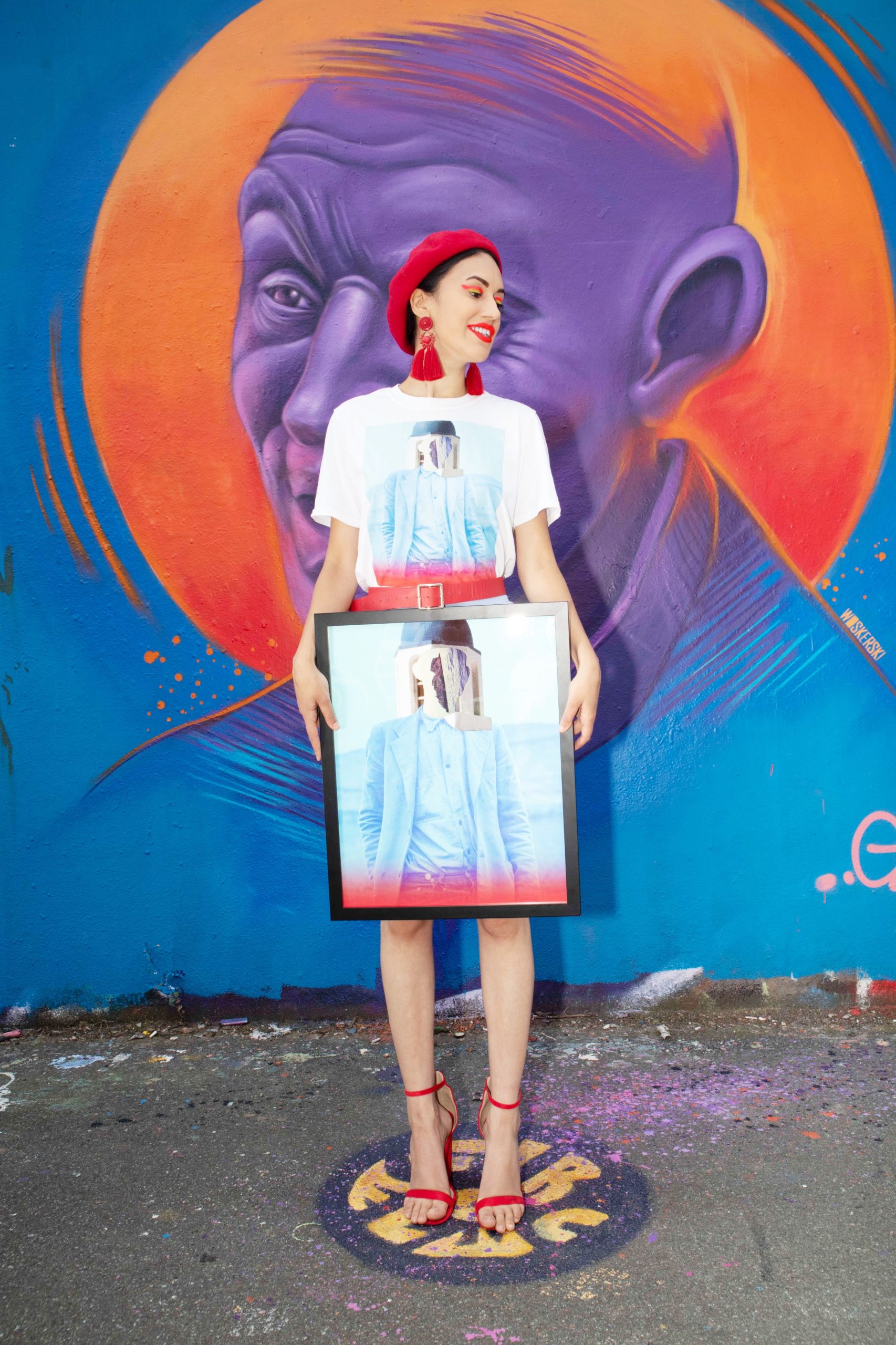
And I am not the only one. It is time that we recognize the contribution that art makes to our health and wellbeing. A study by Arts and Minds, a leading arts and mental health charity, showed that art workshops had a 71% decrease in feelings of anxiety, and a 73% fall in depression. What’s more, 76% of participants said that their wellbeing increased, and 69% felt more socially included. For those of us who struggle with mental health, art reduces cortisol levels (markers for stress), and can induce a positive mental state. Creative activities like painting, drawing, designing, or putting together a well-cordinated outfit (which to me is an art form in itself) has a positive impact on our mental health. It can help us feel calm, even when the world around us has crashed and burned, and help with feelings of loneliness and isolation.
So how can art boost your mental health, and leave you feeling happier today? From relieving symptoms of stress, anxiety and depression, to healing your heart after grief and loss, here are seven incredible ways that art and creativity can change your life today. Whether you are a budding painter, a street art enthusiast, a graphic designer, an art viewer or art historian, viewing and creating art can help you lead a live full of love, tolerance and acceptance. It can increase connectivity in a time conditioned by advanced technologization, and encourage you to discover who you are, and not who others want you to be. In short creativity encourages you to be yourself, to invest in self-care and self-love, and art shows you how to be kinder to yourself, even deep in depression.
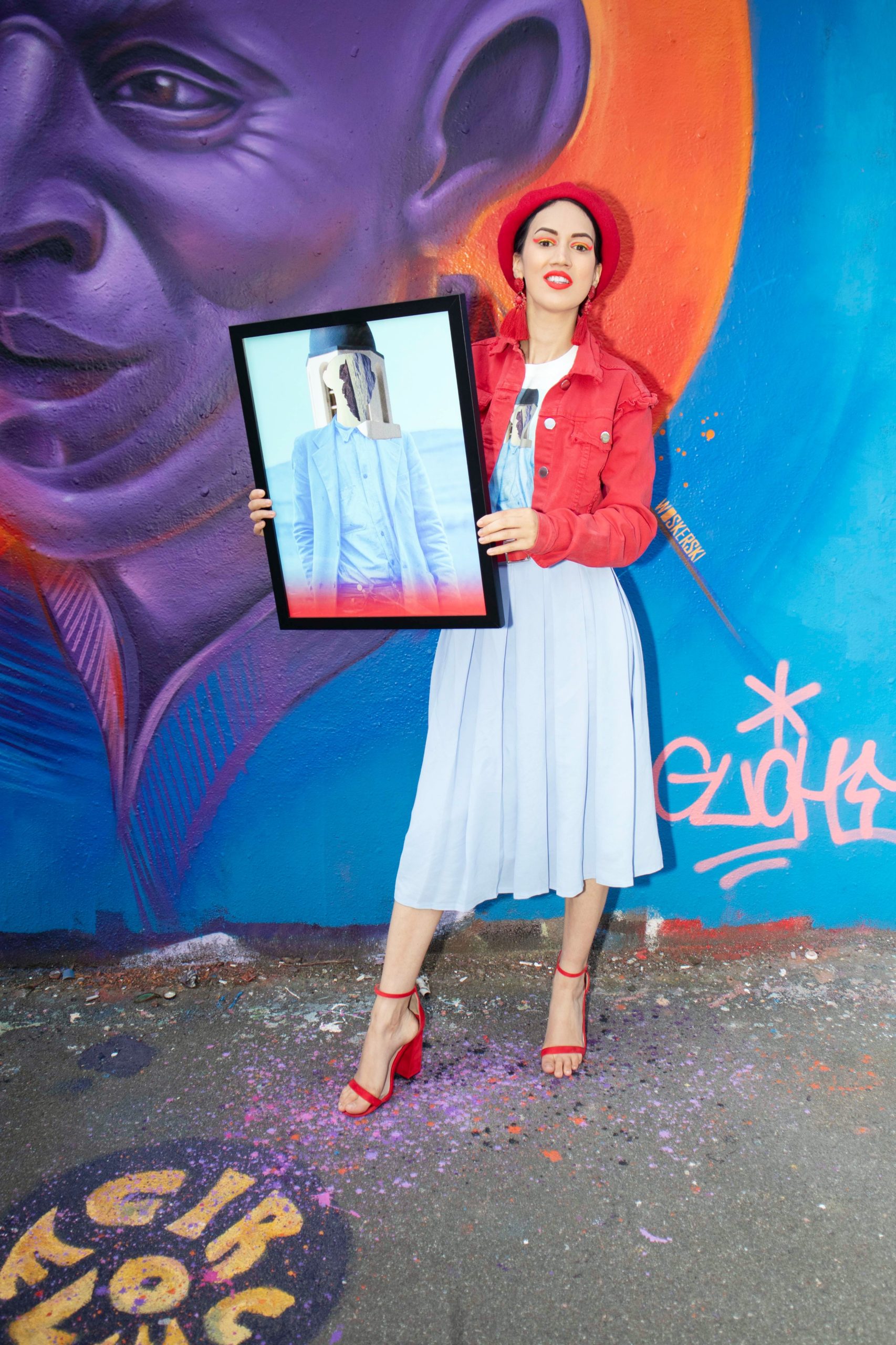
Art Can Relieve Stress, Anxiety And Depression
Even when I was a young girl, barely toddling, I was told that I always had an affinity for the arts. Bright colours would make my dark eyes widen in delight, shapes would make me giggle, and I would clamour with undisguised interest. Whether it was a story book with beautiful illustrations, boldy patterned dresses, that were screaming out to be worn, or dabbling in face paint, my earliest memories are centered around the beauty of art. I can’t remember who I was back then, but what I see is an inquisitive explorer, who would get her hands into everything and anything, always asking questions, always curious. Art allowed me to express myself as my own person, and be someone who was bold, brave and captivating.
What I do remember even in my early years, is how the low moods, poor self-esteem, and turbulent emotions crept in. I knew that I was living a life which was perpetuated by hardship, trauma, and neglect, but what I didn’t know at the time, was exactly what I was suffering from. I would feel frustrated that angry, hot, and salty tears would burst forth from swollen eyes, my body convulsed in sobs. Why couldn’t I be like everybody else, who knew had to manage their emotions? I was told time and time again that I was being a drama queen, little did I know how wrong they were. It was not ‘dramatic’ to be an emotional person, nor was there anything wrong with openly, and unashamedly crying whenever you felt upset, angry, frustated or anxious. For me being in touch with my emotions was extremely normal, and while that wasn’t a bad thing it was beginning to take over my life. I have been struggling with my mental health for as long as I can remember, and even to this day, I can find it difficult to not get swallowed up by the extremity of the way I feel.
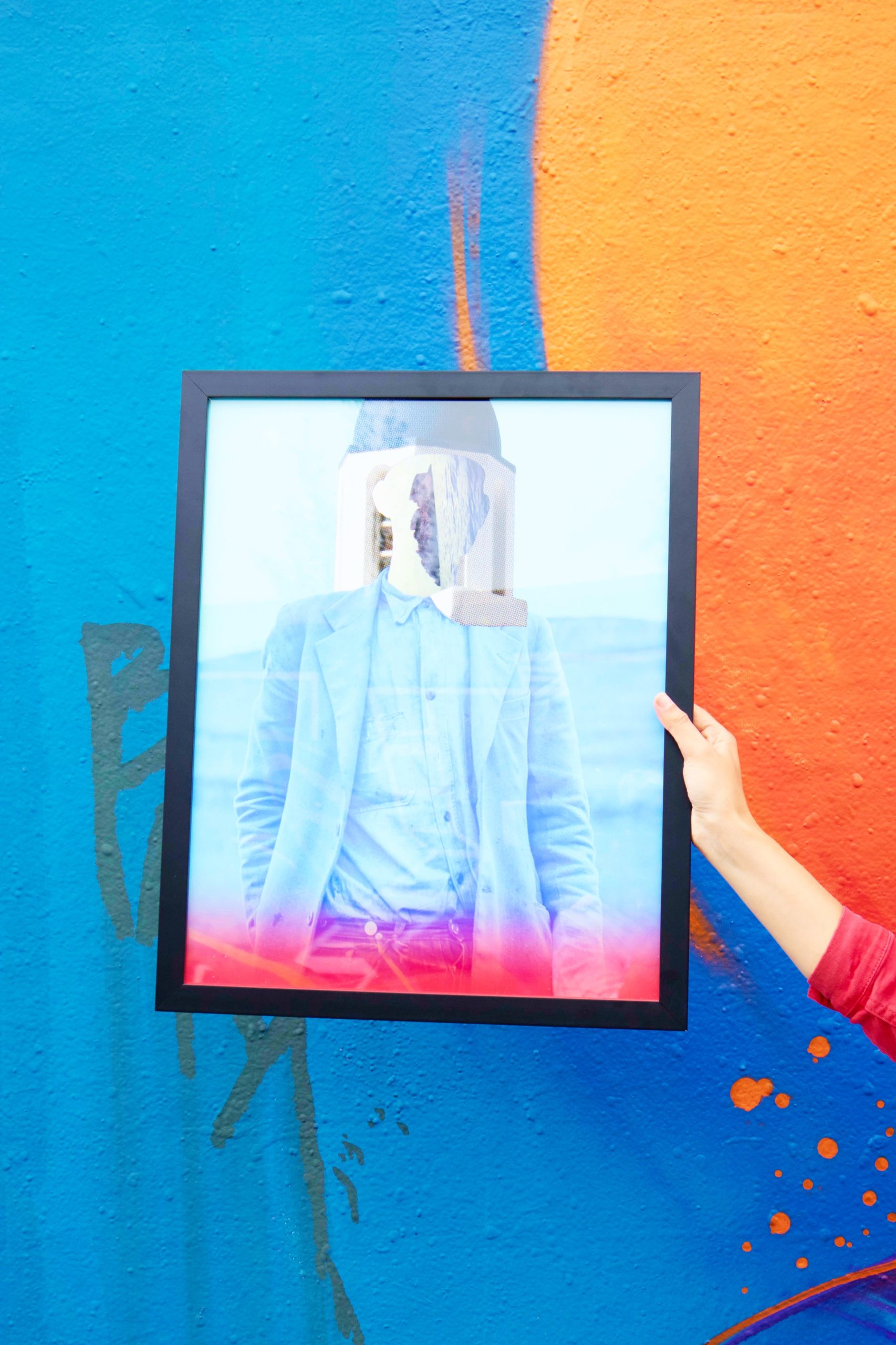
Nuinx art can boost your mental health if you are a colour lover like I am!
That’s why I have made art a huge part of my self-care routine, because it helps me feel mentally clear and calm, even if it is just temporarily. It gives my brain a distraction from my overlapping thoughts, and provides me with the temporary rest, and relaxation that I need. Like doing meditation, and yoga, painting, drawing, photography, and viewing art helps me stay grounded and centered. It allows me to deal with my mental health in a healthy, and cathartic way, where I don’t feel like I am drowning. While I am no artist, what I am good at is the combining of colours, whether that be in fashion, interior design, or graphic design. I love to play around with colours, textures, and be bold and unafraid. If you look at the way I dress, I see myself as a walking piece of art, expressing my identity through patterns, shapes, and colours.
I love the way colour and art makes me feel, and it expresses my self-identity in more ways than one. I lead with my personality, never scared to be myself, and am always unique, quirky, and a little different. And art is the same, you have the freedom to create art as you see fit. Someone’s definition of art, might be entirely different to your own, but to me it could be anything. Art can be the way that you style yourself, the way that you edit photos, even how you make your bed. The last one might sound inane, but art really is down to interpretation. So how can art relieve stress, anxiety and depression?
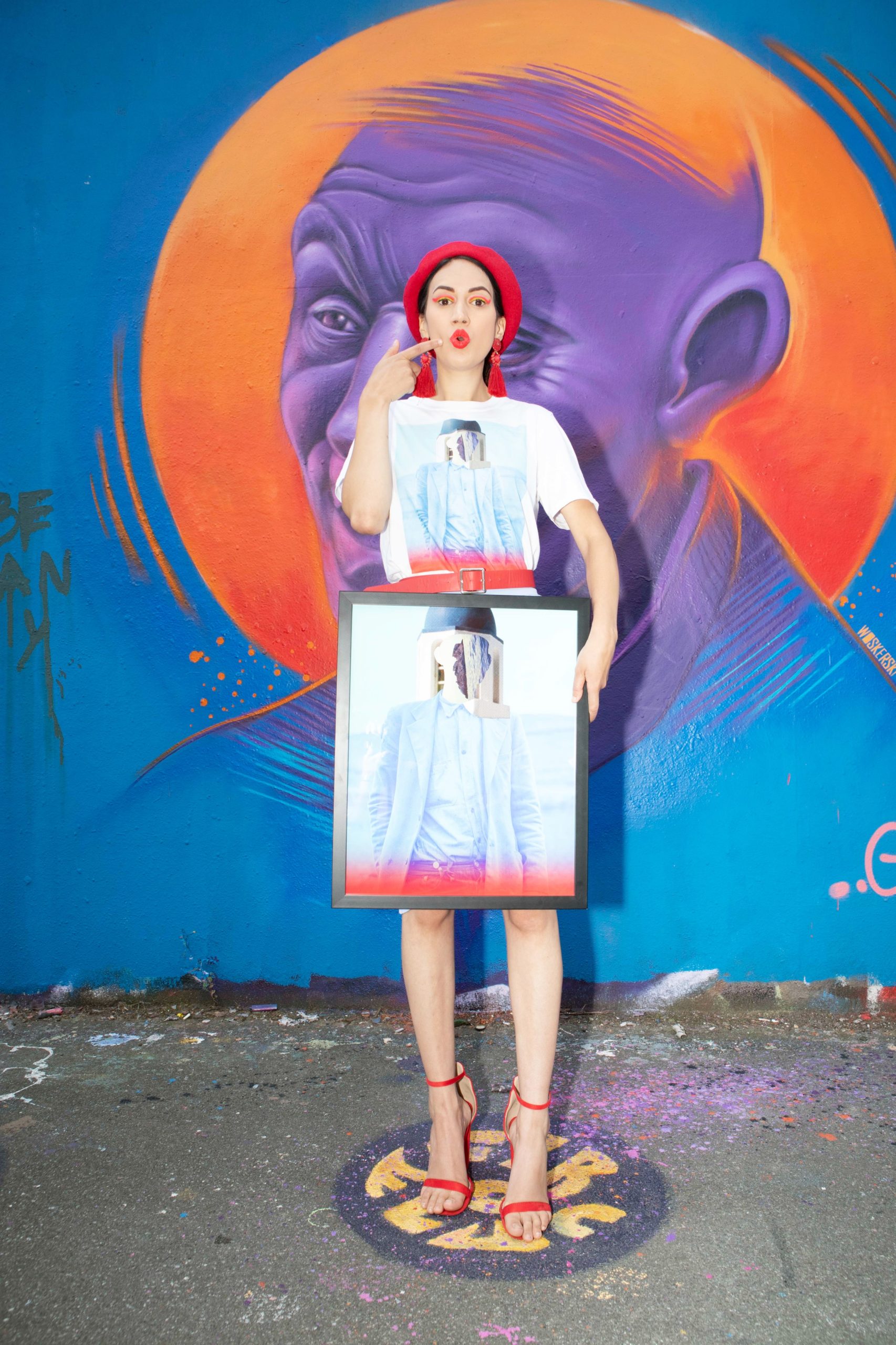
Having fun with art can boost your mental health and make you feel happier.
The average person has roughly 70,000 thoughts per day, and 90% of them are exactly the same, day in and day out. For example I will have recurring thoughts that keep me up at night, and make it difficult for me to switch off. It could be financial worries, because I work for myself, and worry about the income coming in each month, personal worries like housing, relationships, and friendships, or even business worries, like managing my workload. When we have conflicting, worrying thoughts all the time, this makes it hard for us to switch off, and truly live in the moment. Which is why art is a great medium for me, because it allows me to get in the zone, and create a meditative-like state that focuses my mind, and temporaily pushes aside all my worries. I don’t focus on feeling depressed, anxious, or stressed. Instead I focus on the art that is in front of me.
Some days, I view art passively, letting its calm wash over me, in a healing spray. I close my eyes and imagine myself in the Nuinx painting. There is a deep blue sea, turquoise waves bounce and wash the golden sand deliciously. I imagine what it would feel like to be free from stress, its clawing fingernails retracted from my skin, inedible imprints fading slowly. There is a mount on a hilltop not too tall a palm, its purple head like a silent swordfish. In this abstract painting, the nonsensical is comforting, a fantasy world where everything is upside down, but in a strangely calming way. I am so used to my life being topsy turvy, that being inside a painting where there is no narrative structure or plot, is strangely soothing. When I see art, it allows me to reframe the way I think through new, more rational eyes. Instead of saying ‘ you will never feel happy’, ‘you will always be anxious’, I change the way I think. I acknowledge that I have pain and trauma which is difficult to overcome, but establish that I am being proactive about dealing with the way I feel.
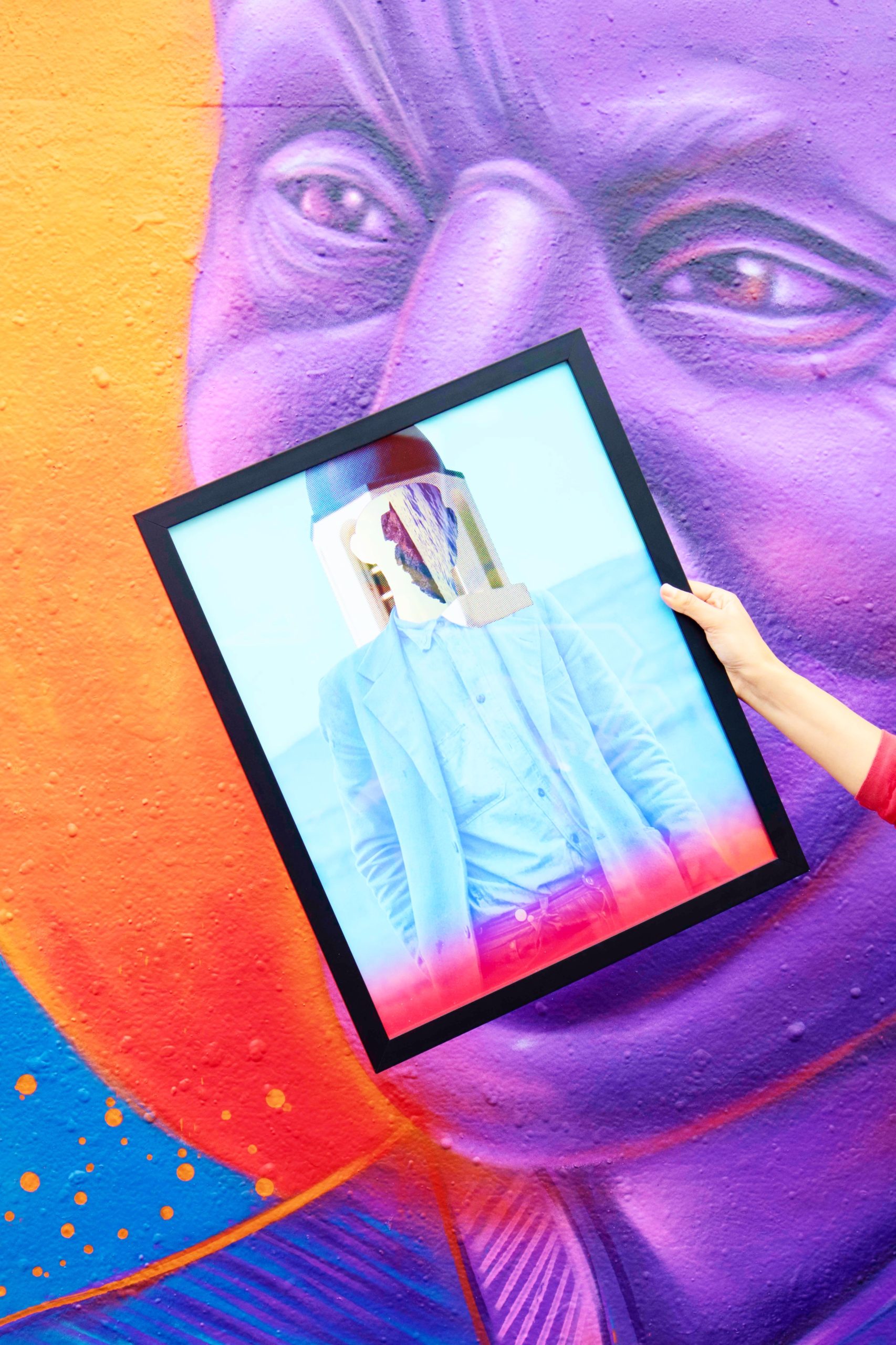
One artistic medium that is amazing for stress relief, anxiety and depression is adult colouring books. Not only is it an artistic form of expression, where colours can soothe your inflamed mind, body, and soul, but colouring is a form of art therapy too. Whether you are struggling with addiction, trauma, depression, anxiety, or a chronic health condition, using a colouring book can relax your brain. It refocuses your attention, on the art you are creating, and helps decrease symptoms of physical and mental distress. For example, when I lost my childhood friend last year, I turned to art as a way to heal myself (more on that later). It helped me be mindful in the sense that I could channel my hurt, devestation, and sadness, into a cathartic medium, which helped me deal with my loss. And I am not the only one. We live in a stress-inducing culture, that is fast-paced, and leaves little to no room for mistakes. We find it hard to slow down, and become anxious when we stop working, or even if we have too much work on. Its perfectly normal to feel this way.
Art Can Help You Come To Terms With Childhood Trauma
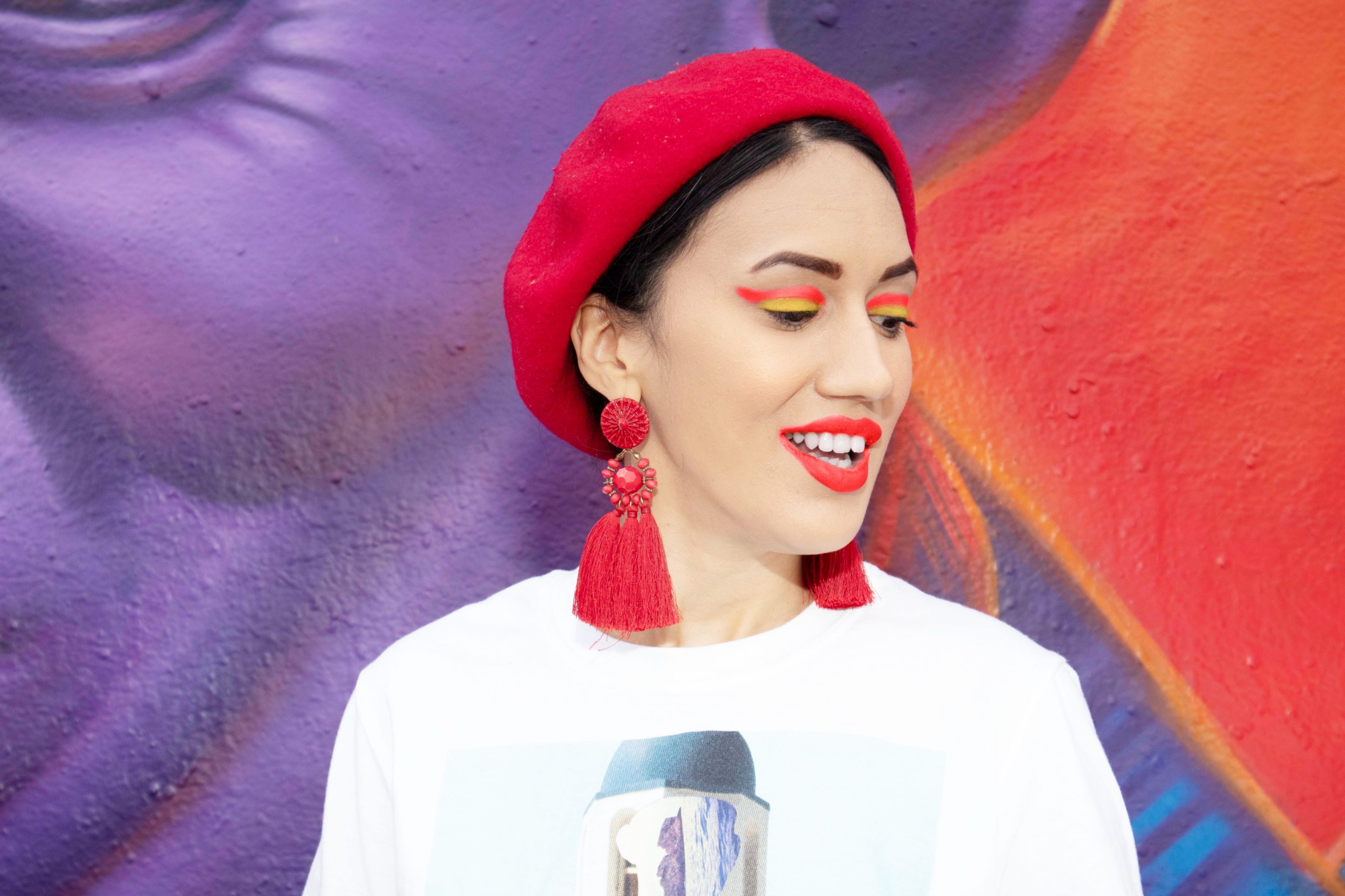
Dealing with trauma is never easy but art can boost your mental health and help you come to terms with your pain.
As a child, my life wasn’t easy, let down by the people who were meant to love and cherish me the most. I was abandoned by my mother aged 2 and a half, abused by my stepmother at the age of six, and put into care when I was 10. Was it any wonder that I had trust and abandonment issues, when I was fed a warped version of love on a decaying platter? Didn’t it make sense that I was in a constant state of fear, panic, and anxiety, when my life growing up was a tulmotous heap of uncertainity. It’s why I liked to live a life where I was in control, where I could plan things down to a T, and forge a certain future. But here’s the thing, life is full of setbacks, knockbacks, and obstacles to overcome. In my life, sometimes it feels like I can’t catch a break, overwhelmed by the constant feeling of spiralling out of control, where I feel antsy in my own skin.
Though I have dealt with my childhood, teen and adult trauma, some feelings are hard to shake off. When you have habits to protect yourself from a life of harm, it can be hard to forget what you know, and embrace the difficult. But what do I mean by that? Well, put simply, habits are ingrained in our identity footprint, and to change, or adapt habits, can sometimes take months, years, and even decades to achieve. For example, me trying to be less anxious, is easier said than done, when my body, mind, and soul constantly feels like it is under attack. It feels like it always needs to be on guard, and the physical, mental and psychological implications of that is intense. Whether it is a tight chest, getting triggered over the smallest of things, overthinking, or daily panic attacks, my anxiety, and depression has no limits.

That’s why I really value art therapy, because it has helped me process the traumatic events of my past and present in a new way. Sometimes words can’t capture the way we feel, and art can provide a cathartic outlet, when words fail. Through painting, colouring, drawing, and sculptures, you can examine feelings, and thoughts about trauma, whether that be hurt, disappointment, fear, or being numb. No matter how you feel when you have PTSD, or are suffering with trauma, your feelings are valid, and art helps boost your mental health in a healthy way. When you are a young child, like I was when I was being abused, you lack the vocabulary needed to express yourself fully, and explain why you feel the way that you feel. I didn’t know this then, nor did I understand that I was suffering with depression and anxiety, but I wish I had the access to art therapies like I do now.
Art is healing, art is transcendant, and art is beautiful. When a traumatic memory is visually stored, you might find it painful to express yourself verbally or through words. That’s how I feel when I think back to how my housemate set fire to the house we were living in on purpose. I can’t write about it, because the memory is still too raw, but at the time I was unusually calm, if not detached. I would normally panic and freak out, but I acted quickly and calmly, my organizational instincts taking over. It was only in the aftermath of the event that the fear kicked in, the constant anxiety that something bad was going to happen. In art though, I don’t need to tell people my story. I can draw, paint and sketch subliminal messages that mean something to me, but not others. It’s my private collection of fears, and anxieties, manifested through creativity.
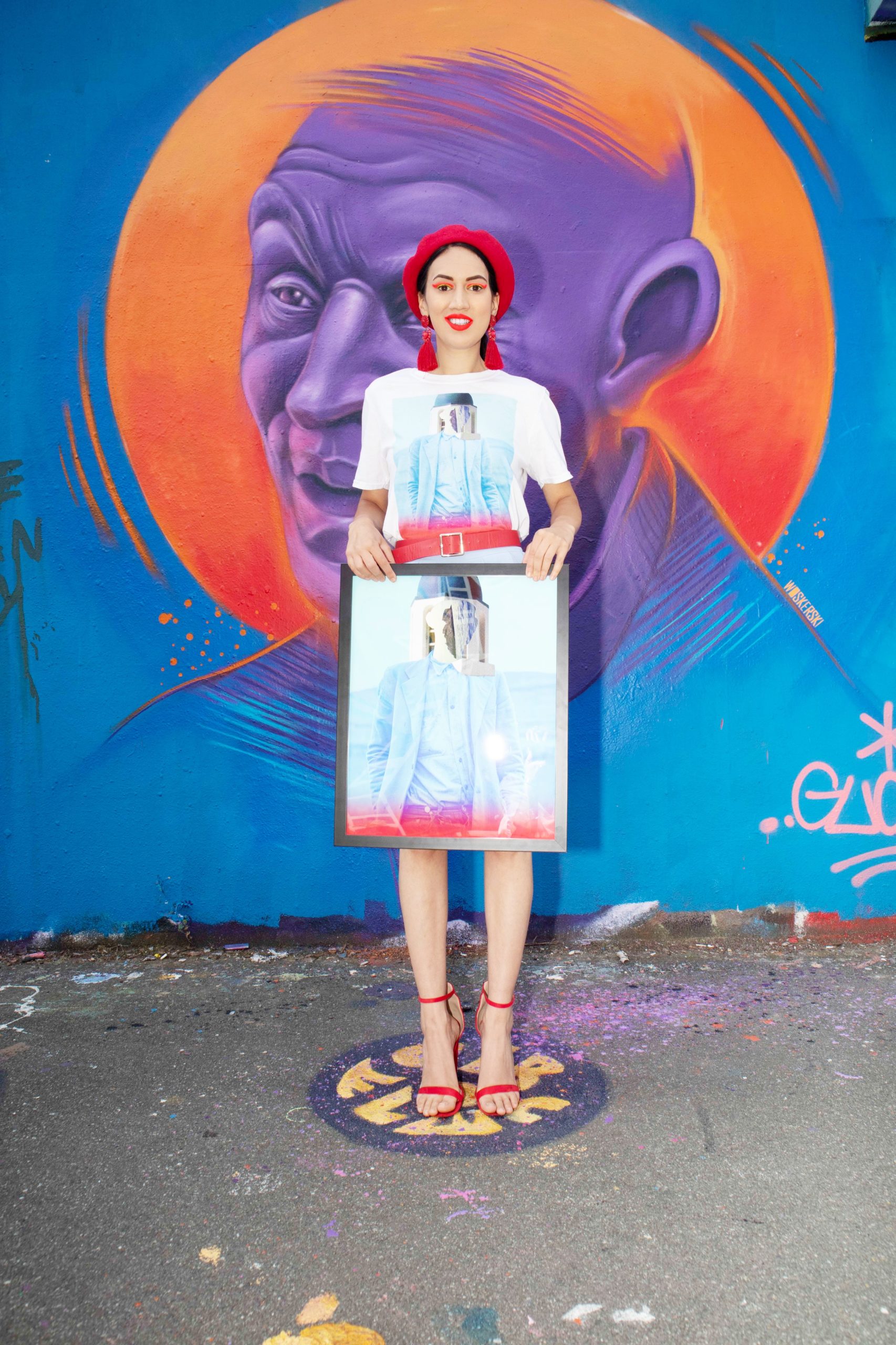
It is a non-verbal narrative which allows me to create an image that tells me how I feel. After the fire I felt impending fear, like the house I was in was swallowing me up, and that I was trapped in my own skin. I was terrified, and for a long time, I was scared to go to sleep, worried about whether I would make it through another day. Art showed me that I felt confused, low, and restless, and it was little wonder that I felt that way. After all, when you are in a house fire, you have no way of knowing whether you will make it out OK. Least of all, when the housemate you lived with, set fire on purpose, on one of his destructive streaks, and still denies it to this day. Despite everything he did to me, I couldn’t help but feel sorry for him, aware of his personal struggles, and life story. But it was no excuse, you don’t treat people like that.
Studies show that childhood trauma can impact brain development, and mental health, which can lead to increased levels of suicide, alcoholism and drug addiction. It’s a sobering thought to see how impactful childhood trauma is on our adult lives, and that more measures need to be taken to help children who are going through difficult times. When I went into foster care, I wasn’t given the emotional support that I needed from social services. There was no treatment plan for my mental health, but one measly counselling session, which did absolutely jack all. Why did I only get a diagnosis aged 22, after so many years of pain, hurt, and self-destruction? That’s why I think that art therapy, CBT, and mindfulness should be a huge part of children’s mental health plan, because they need the support that I never got in my early years.
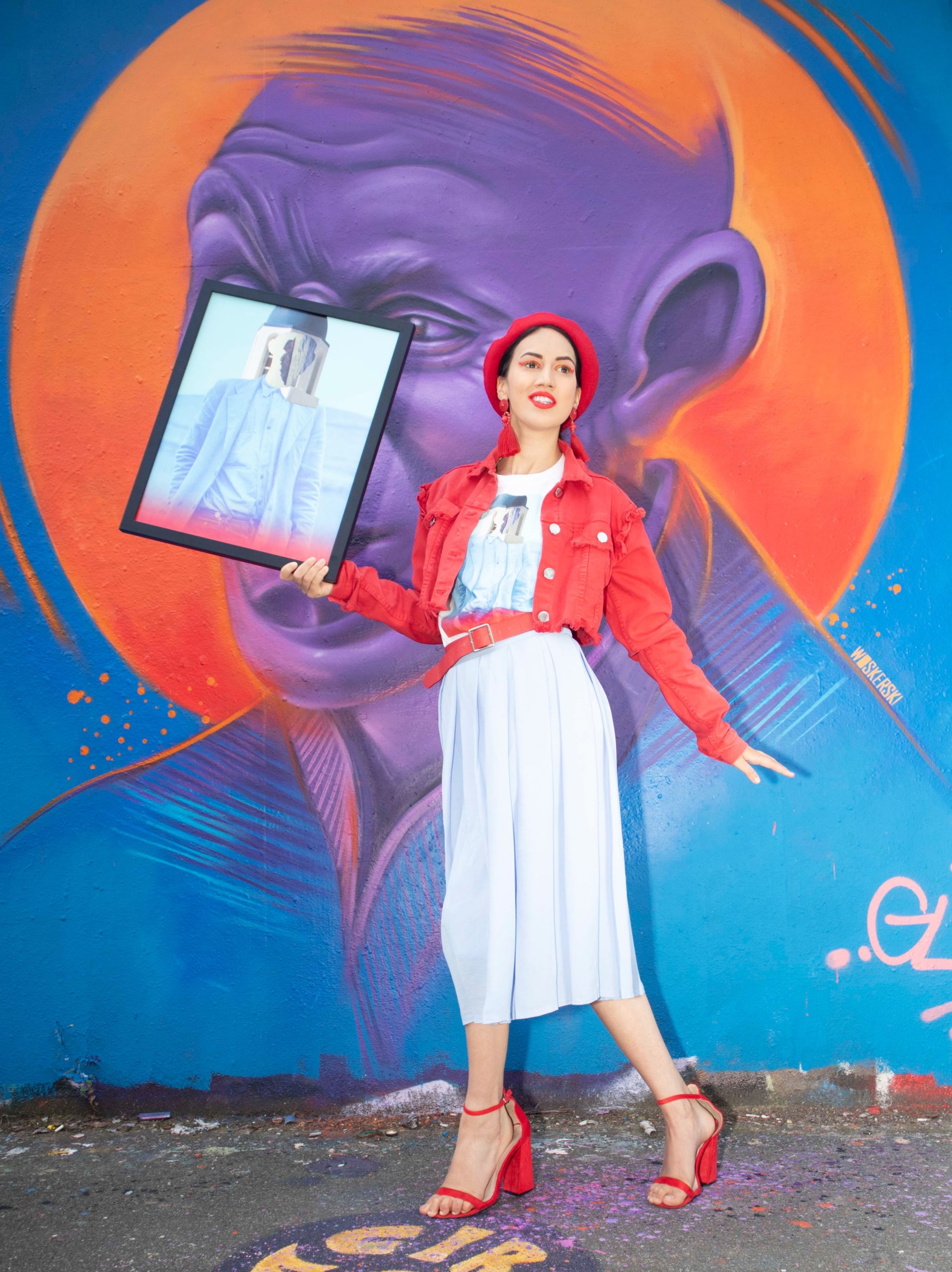
Viewing Art Increases Empathy, Tolerance And Love
I never knew how to love myself, caught up in a web of loathing, and disgust. Over and over again I would berate myself, feeling like bad things happened to me because I deserved it. If people treated me badly, it was because I made them act that way torwards me. If I lost a friend, it was because I pushed them away with my mental health issues. No matter what happened in my life, I always found a way to feel like it was my fault, no matter how positive I tried to act. In public I would mask my feelings, but in quiet moments my mind would betray me, replaying destructive thoughts over and over in my head like clockwork. It was incessant, like a haggle of bees buzzing. No matter how much I tried to block out the negative thoughts, they would come crawling back in, like the vipers that they were.
It took a long time to love myself, and the person I had become, and an even longer time to appreciate who I was a person. I didn’t need to be like anyone else, and realized that the events that had happened in my life was not my fault. It wasn’t my fault that my stepmother abused me, nor did I deserve to be abandoned by my mum, or be severely bullied at secondary school. I didn’t deserve the toxic relationships that I had in my life, and I sure as hell didn’t need the drama that followed me around like a poisonous cloud, threatening to overspill. No, I realised that I was worthy of love, but that love had to start from deep within. As my idol RuPaul said ‘if you can’t love yourself, how the hell are you going to love anybody else’. It was true, as humans, we needed to be better at showing ourselves love too.
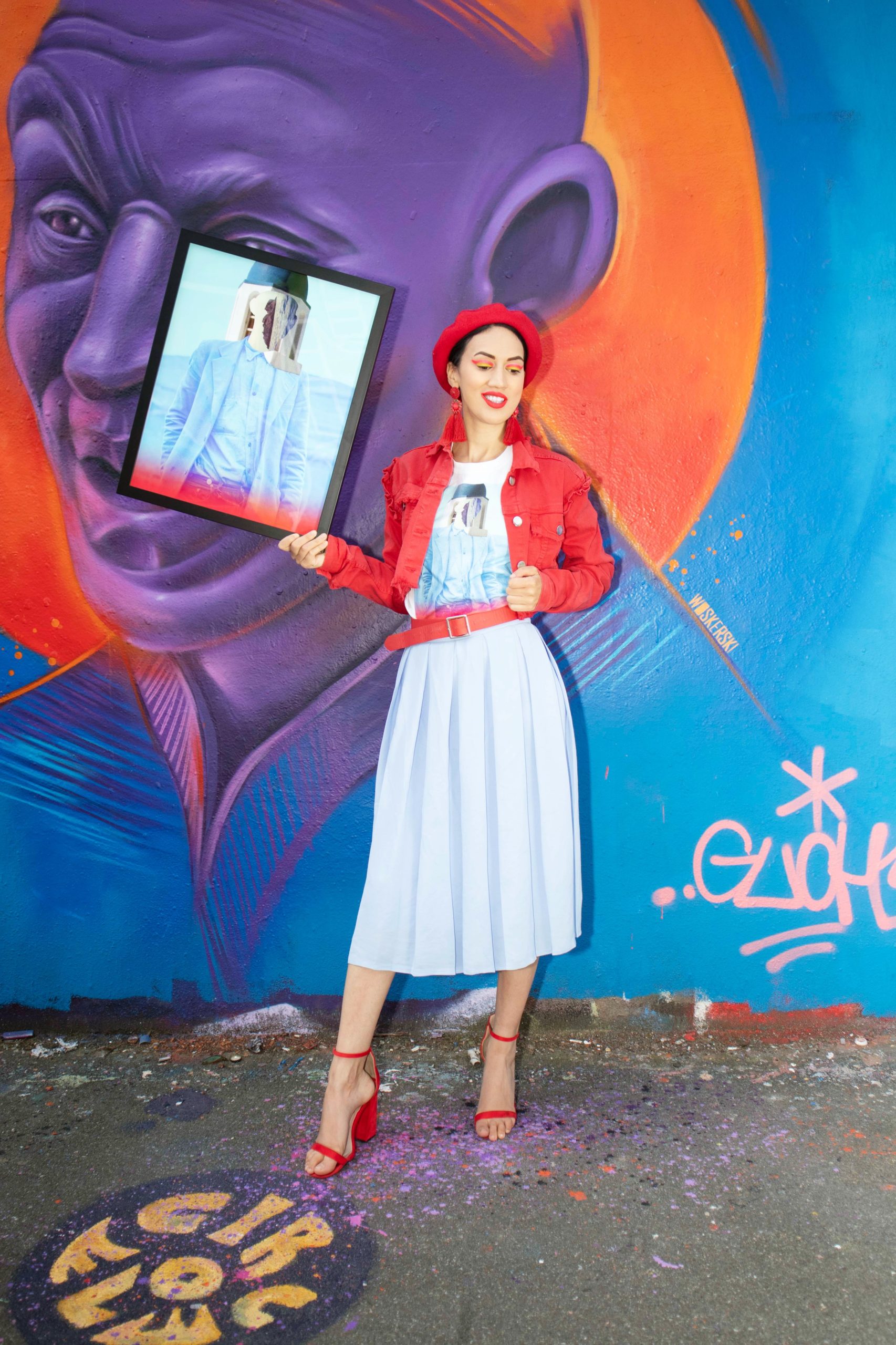
When I would draw, I began a process of drawing out affirmations, things that made me happy, and joyful memories that I had. My aim was not to romantize the darkness in my life, but to focus on the positives, in a way that felt nurturing, nourishing and calming. I would draw out visual representations of what made me happy, cartoonish cats lounging in a homely wonderland, yapping puppies barking in excitement. Delicious bowls of chickpea curry, and rice, served with a steaming side dish of healthy daal, creamy, and moreish. A girl dressed in vibrant florals, a grand flower crown atop her head, smiling as she sipped on a raspberry mojito, belly awash with rum. A sea soaked sandy shore, crystal clear blue waters, where turtles, fish and dolphins swam in synchronized harmony, blisffully free. These were the things that made me happy.
For self-love, I would teach myself to embrace the things about myself that I once hated. The small breasts I thanked for being part of who I was, giving me the ability to wear any clothes that I liked. The small brown eyes peered into, radiating compassion, empathy and love. The small petite figure, and the dark hair, the crooked teeth, and the faint scars. Out of them all, I was the most self-conscious about my teeth, wishing that I had straight, white perfect teeth, that gleamed like pearls in the haunting moonlight. But now all those imperfections were as much a part of me, as I was a part of me. It did not matter that my beauty was unconventional, or that my personality was quirky. I realized that I had spent so many years hating who I was, that I had ignored the good, that made me, well…me. There was the tanned olive skin, sunkissed complexion all year round, come rain and shine. The personality that radiated joy, compassion, laughter, and an innate ability to crack jokes, and make people laugh. I may not have been a beauty queen, but I was definitely funny.
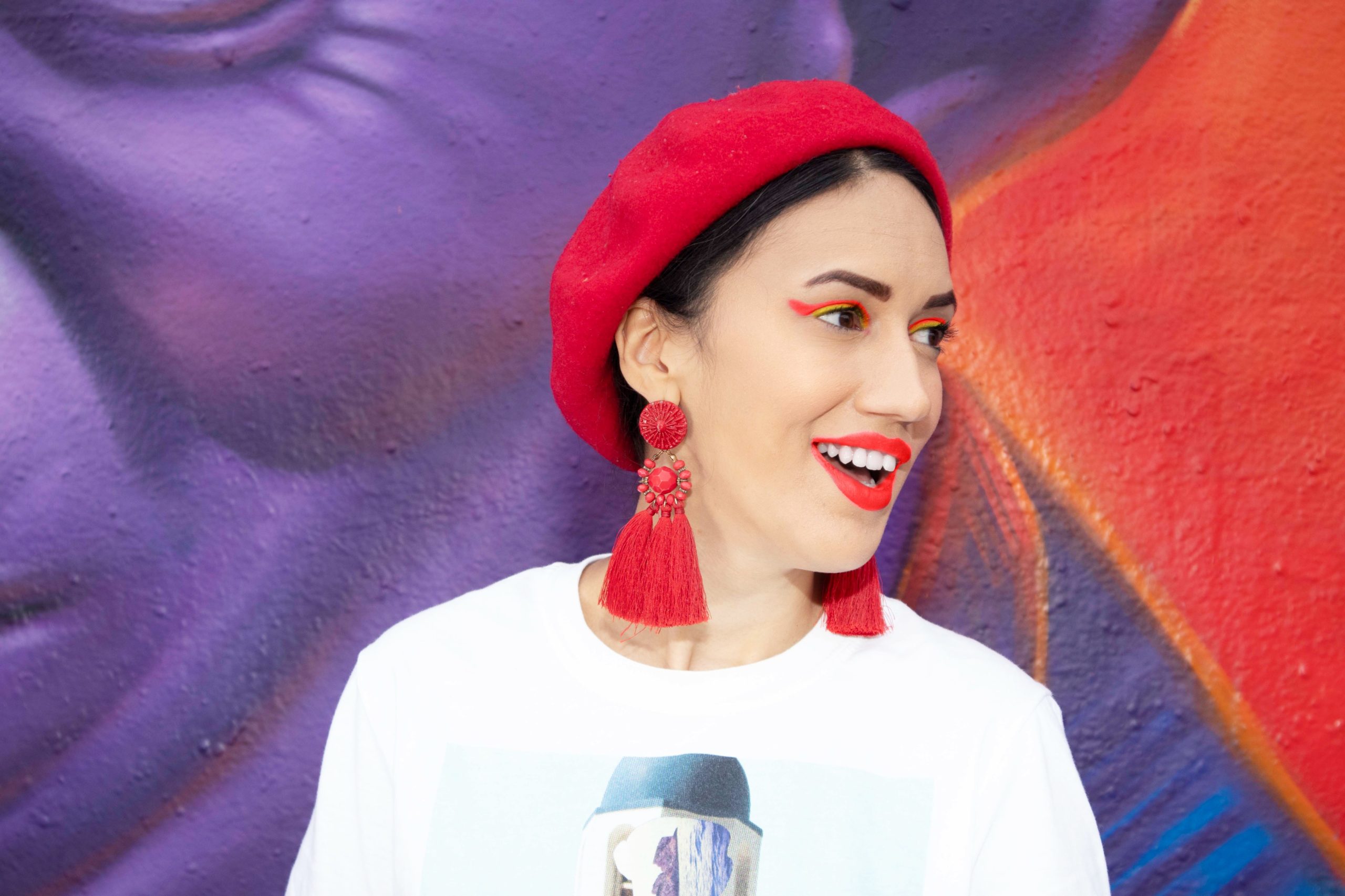
I am at my happiest when I am surrounded by art. Whether that is street art, home art, or art galleries, art can boost mental health.
I knew that art, might not be a miracle cure, but for me it performed miracles. It taught me to have empathy towards not only others, but themselves. The artists that I followed would stir up emotion inside me, a particularly poignant memorial to a street artist, loved and lost, a beautiful reminder of the shortness of life. It showed me that I needed to spend less time hating things about myself, and more time enjoying the life that I had been given. I had to be thankful that I was safe now, I was secure, nothing could hurt me now, as it could then. I knew that artists’s work could increase empathy in others, making the viewer more sensitive, and vunerable to the world around them, so why couldn’t I do the same for me. Through art, I showed myself self-love, making it a part of my happiness, and self-care routine, to boost my self-esteeme and confidence.
When we show ourselves empathy, we become more attuned to the emotions of our loved ones around us. Artists as a whole are more empathic than non-artists, are sensitive, and have fluid permeable personal boundaries that helps them to meaningfully connect to people. But how does art boost our mental health, and help us become more tolerant, empathetic, and loving? In the 1800’s philosophers came up with the idea that art triggers viewers memories, and emotions, creating pleasure. So empathy was the mysterious element that connected art, and the viewer, increasing feelings of self-compassion and love. A theory that has remained consistient to this day, Professor Professor Semir Zeki, a neurobiologist at the University College London, discovered that simply the act of viewing art gives pleasure, much like falling in love.
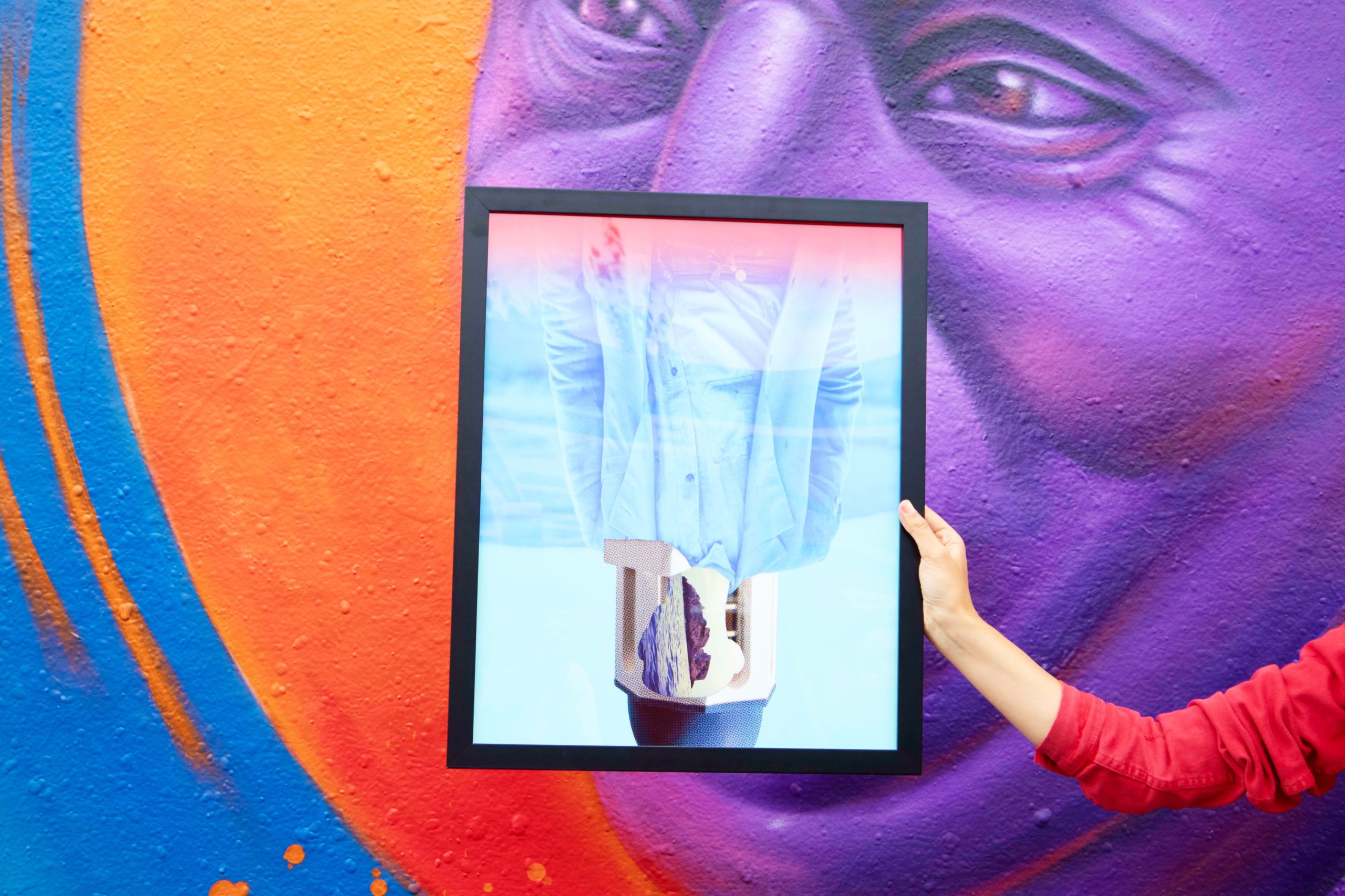
Brain scans revealed that looking at works of art triggers a surge of dopamine in the same area of the brain that registers romantic love. Whether you are the artist or the viewer, looking at art encourages you to gain a wider perspective, and have your mind opened to the way that others see, hear, and feel, through the medium of a painting, drawing or mural. When you paint, you can teach yourself, and others to embrace self-love, whether that be subliminally or overtly, and encourage your viewers to fall in love with themselves, as much as you have with yourself. Because its a process; falling in love is hard, falling in love with yourself is even harder, but not impossible. When we love ourselves, we gave greater love, compassion, and support to give to those around us.

Art Can Heal Your Heart After Grief And Loss
Grief is an ugly emotion, one that eats you up inside, as you are consumed with thoughts of ‘what ifs’, ‘whys’ and ‘how could this happen’, tears dripping down your cheek. When I lose a loved one, it is like the whole world has stood still, and I have forgotten that I am the one who is living. I can’t eat, I can’t sleep, I can’t function. My every waking moment is engulfed by memories, of the loved one lost, trying to recapture their smile, remember their laugh. As time goes on the pain gets more manageable, but the grief is still with you, your heart forever changed. The wound is half-closed, half-opened, an anniversary of death unleashing a tidal wave of sobs, tribute posts making you lament what could have been. Just over a year ago, I lost my friend of 20 years, the golden Grace, who I had known since I was five years old.
Flaxen gold hair, shimmering in the sunlight, beautiful aqua blue eyes that gleamed mischievously. Beautiful inside and out, it was hard to believe I had lost my friend, when she was only 26. This year, she would have been 27, the next year 28. Robbed of so many things that we take for granted as grow older, a summer angel, taken too soon. When she died, I was devestated and sank into a deep depression, inundated with feelings of grief, like I had been rubbed raw around the edges. It took a long time to come to terms with her death, and even now, a year and a bit later, I feel sadness for the great friend that I have lost. As the world started blooming around me, and her favourite sweetpeas came into season, I remembered something beautiful. Those who we love don’t go away, they walk beside us everyday. And I feel her with me, in the fresh grass cuttings, and the blooming flowers. In nature, where she was at her happiest, whenever I go back home. She is among the pebbles at the beach, and high above in the chalky cliffs. She is always here.

Not only did art boost my mental health, but it also helped me come to terms with trauma in a cathartic way.
Like many times in my life, I turned to art to heal my broken heart. When we paint, when we sculpt, or even aimlessly doodle, our art process releases the tension of grief. It allows our all-ecompassing grief to expand and contract, while providing a safe container in which this process can take place. When we create, and allow ourselves to make art that reflects the way we feel, we give ourselves the permission to examine all that is happening within our grieving bodies. After all, loss can be life altering, and life as you know it might never be the same again. Coming to terms to a life without your loved one, whether that is a friend, parents, cousins, aunties and uncles, or anyone else is bloody hard, and there’s no if’s and buts about it. Everyone responds to loss in different ways, but dabbling in art can help us cope, and find solace during dark times.
Loss and grief isn’t just relegated to death either. It can be losing a job, a friendship, relationship, or even moving country. You might mourn the life you had before, a loss of earnings, the people you were connected with and where you lived. Loss, mourning and grief is all part of the cycle of life, but it does not make it any easier to deal with. While there is no quick fix to heal your mind, body, and soul, when you create or view art, you can allow yourself to feel your emotions, in a healthy, cathartic way. You might paint a tribute to your loved one, where you show your sadness, love, and fears, showing how their death made you feel, and how it will impact your future. Of course, art can’t erase your feelings of loss, and grief, but what it can do is alleviate symptoms of depression, anxiety, and low moods.
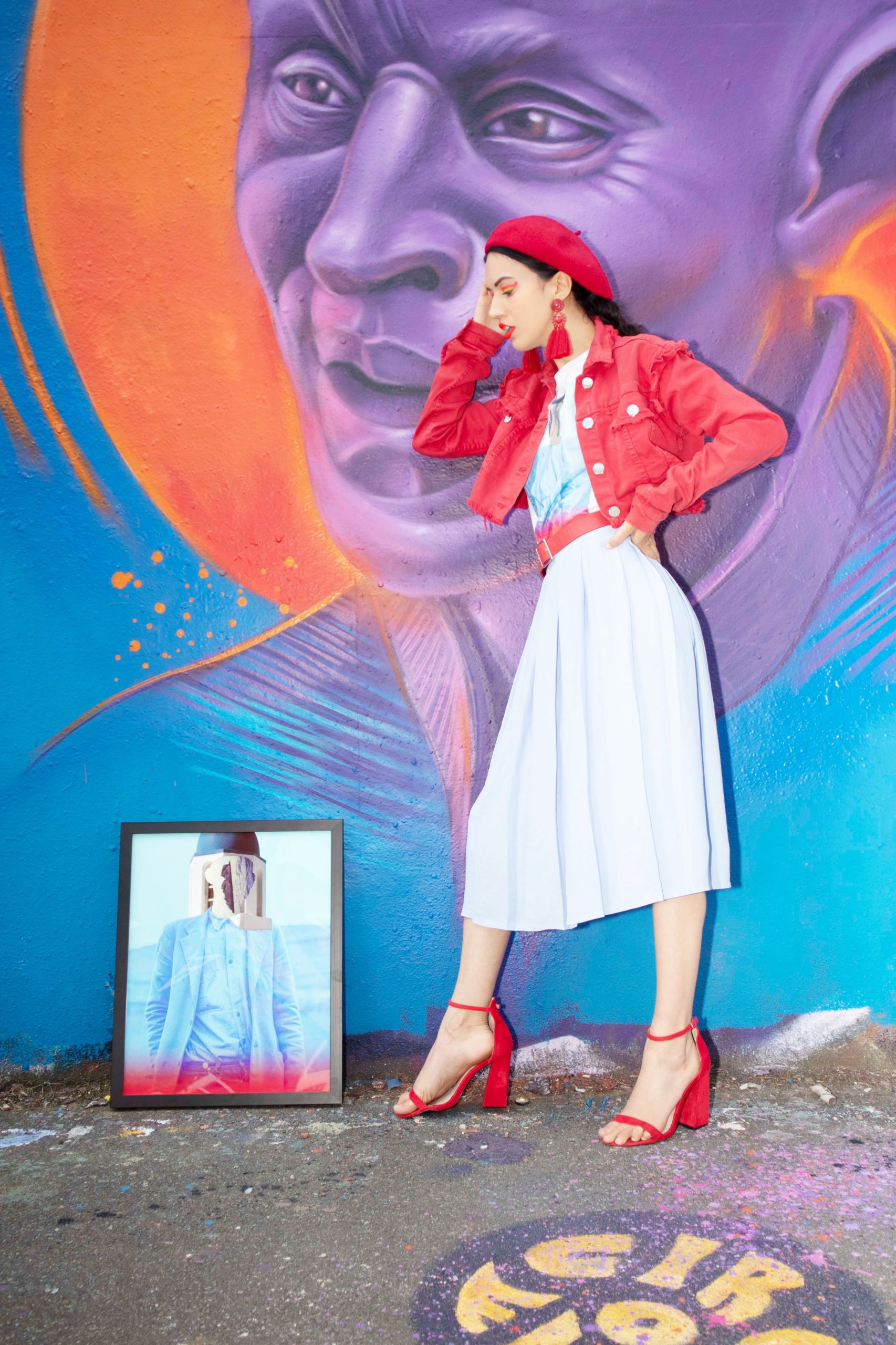
After all, according to Douglas Mitchell, art influences how we look at, unblock, wrestle with, and shed light on the need to distance and detach from our pain. If you are in denial, and are refusing to accept your grief, in order to block out the pain, you are stopping yourself from moving forward. Acknowledging your grief is hard, but acceptance is the key to healing, with a happier, living memory of them in your heart. When we create and look at art, the art therapy becomes an anchor, that keeps us afloat, even when we are tired of functioning. It gives you purpose, and something meaningful to do, when you are trying to process your grief. Remember, grief is not something that you should be looking to get over, as it is always going to be a part of you. It’s about listening to our grief, and giving it the space that it needs to heal, with love and compassion.
Both grief and art are a part of our nature, and the creative process is an integral part of who we are as humans. When you create, you get into the moment, and while you might feel negative emotions like sadness, anger, and confusion, good ones will crop up too. You might feel hopeful, a sense of relief, feeling like you are doing something good by memorializing him. When you are in the zone, your mind is (temporarily) silenced, and the memories can float to the surface unannounced. It is like when I do meditation, often thoughts of my beloved friend will come into mind. Instead of trying to block those memories out, I surrender to the feelings, rather than fight against them. Your art is a centering process that allows you to feel grounded, calm, and connected. Even if the feeling is temporary, and your heart is hurting, your painful memories will eventually become less raw. You will look at your loss, and think about things pragmatically, unable to change the events of the years past.
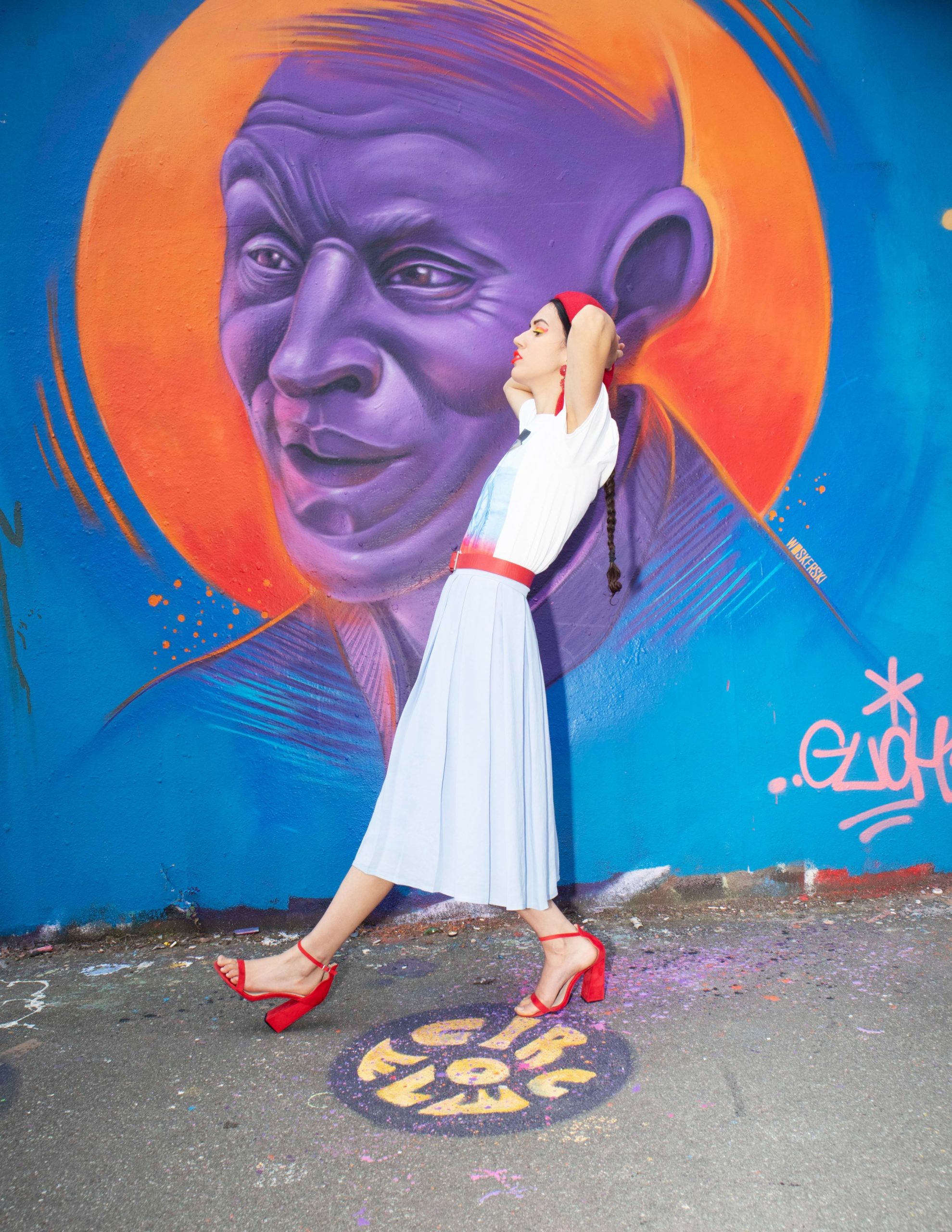
Art Can Boost Your Self-Esteem And Confidence
I touched upon my confidence issues, but even to this day, I still struggle to be comfortable in my own skin. I see the ravages of trauma, criss-crossed against my skin, the mental hurt etched on my skin, like an old-timey map. But despite the scars, and the lacerations, the invisible bruises, and the years of hurt, I am a different person to the young, fearful kid that I was. No longer do I berate myself with words of disgust, contempt, and negativity, but I choose to relish the positives. I always tell people that I am not a ‘contemporary beauty’, and that is why I lead with my personality, but I no longer define myself by the way I look. Many of my self-confidence issues were centered around the way I looked, because people would tell me that I was ‘ugly’, ‘unattractive’ and ‘unlovable’, when I should have been celebrating what I did have. I learned to accept my unique personality, my imperfections and flaws, lovingly looking at them not through rose-tinted glasses, but eyes that could smile and laugh. I realised that as I got older, I didn’t need to base my happiness around the way I looked, but the way I acted.
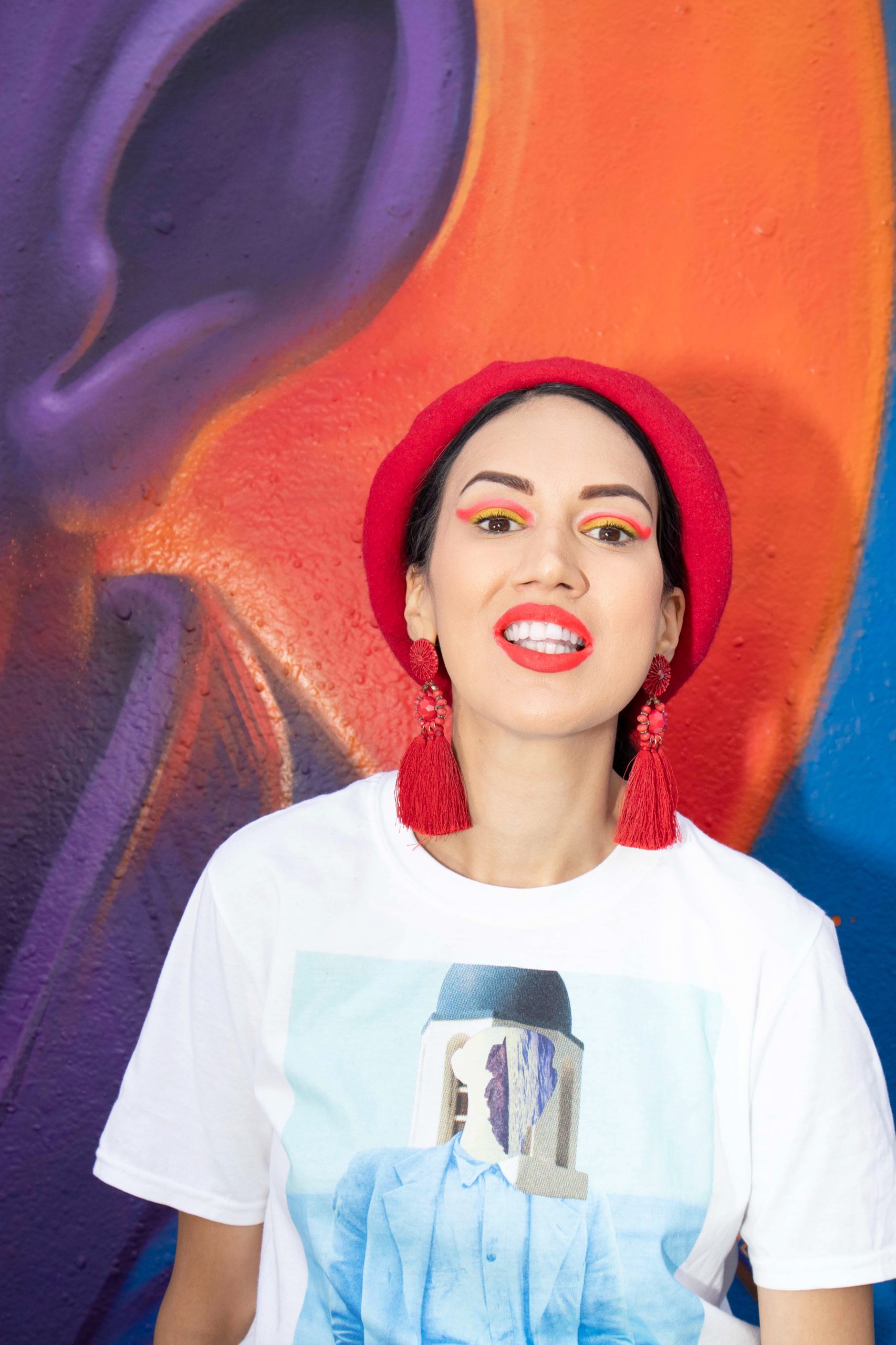
When I would draw, paint, or even doodle, I felt elation, like I had never felt before. I would draw abstract faces, and random patterns, a sea of reds, oranges, and yellows, bold colours to release the hurt, and hatred in my body. Little by little, I felt self-love, choosing to love myself, inspite of my many irregularities, and embrace the woman that I had become. This face was loved, this body was cherished, this soul was worshipped. It didn’t matter that I had zero artistic talent, I did not care. What mattered is that I had found a calming, soothing yet energizing outlet for my mental health, that made me feel better in myself. It taught me to care less about what people thought of me, and focused my attention on erasing the years, where I hadn’t shown myself love. Its not to say that I was always a self-loving, self-appreciating woman, but I tried to battle my demons with love, and compassion, even when my mind was telling me elsewise. Despite its desperate attempts to turn me against myself, the vipers of the mind had failed miserably, skulking back to my sub-conscious, waiting to strike out again.
When you create art to boost your mental health, you feel good, really good. When you draw, or paint, it releases the feel-good neurotransmitter dopamine, otherwise known as the ‘motivation molecule’. Not only does it boost drive, focus and concentration, but it also enables you to plan ahead, and resist impulses so that you can achieve your wildest dreams. As well as helping you feel more confident, and boosting your self-esteem, it helps you feel like you have achieved something great. Whether you are an incredible artist, or a hobbyist, your skill level does not matter. What matters is how you feel inside. Do you get that glow within you, like you are on top of the world, and nothing can bring you down? Because that is how art makes me feel, incredibly, and uniquely me. For the first time in my life, I can map out my insecurities, and then let them go, with a swoop of a paintbrush, giving myself permission to heal and move on
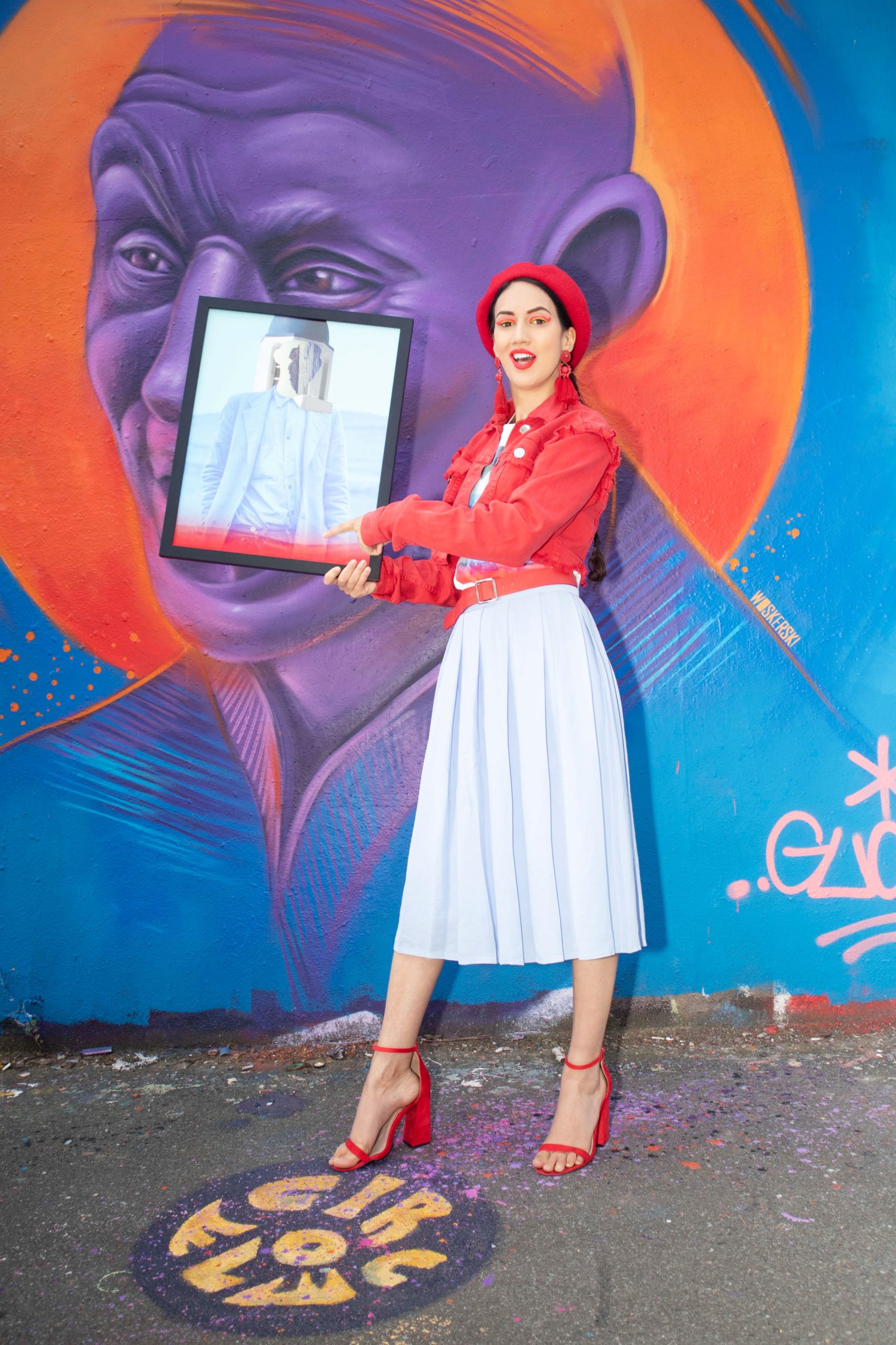
So how does creativity increase self-esteem? It is a form of self-expression that allows you to put unproccessed thoughts and feelings on paper, in a healthy way. It can help put things into perspective, and validate your feelings, showing you that you are worthy of a confident, happier future, if you choose to accept it. For some, we articulate ourselves best through the art we create. For me I wear bright, bold and vibrant colours and prints, because it brings me joy. To me my creative writing is an art form too, and allows me to show exactly how I feel, in ways that speaking dosen’t. Art isn’t judgy, nor is it presumptous. Instead art is welcoming, a hug emblazoned with love, waiting for you to unless your inner confidence, and find the light within. When you have something to focus on, you can channel the negative energy you have into positive, uplifting thoughts.
Art is empowering, because it gives you a ‘purpose’ and a ‘why’ when you are searching for meaning in your life. I often saw myself as a lost soul, unanchored, battling turbulent seas in stormy weathers, as the demons threatened to take over. But even when I nearly drowned, I found a lifeboat, that hoisted me up, and afloat, taming the wild sirens who unleashed hatred on unsuspecting souls. With art there was stability, unleashing my chaos onto paper, sighing relief, as the toxicity oozed out of me, inky black puddles. It gave me something meaningful to do, and as I worked at my craft, my confidence grew, caring less about what people thought of me, choosing to be confident in who I was as a person, as opposed to what I looked like. Because who I was a person was pretty darn great. I was smart, iniquisitive and fiercely loyal. A kind person with a good heart, who put others before herself, who liked to see the good in others, even when others could only see bad. I was forgiving, empathetic, yet funny and quirky always laughing.

Art And Creative Activities Can Help You Feel Less Lonely
I always thought that artists were lonely, alienated by their path, having to stand alone, in order to paint a picture that society didn’t want to see. But I was wrong, art, and creativity was designed to make you feel less lonely, a companion in dark times, that made you feel worthy. Because we are all worthy of friendship, no matter who we are or what we have done. Without friends we are isolated, struggling to get by, in a world where friends equals so called currency. But here’s the T, its not about the number of friends that you have, but about quality. When I was battling a deep, dank depression, that reeked of desolation, there were few that stood by me, some people lurking in the shadows, waiting for the fun Ana to appear. But like me or hate me, I am not always fun, I am not always joyful. Sometimes I am depressed, anxious, and numb to the world around me. I feel pain in my mental health, whose wounds go far deeper then anyone realized. Even when I am surrounded by a sea of people I feel lonely, like I can’t reach them.
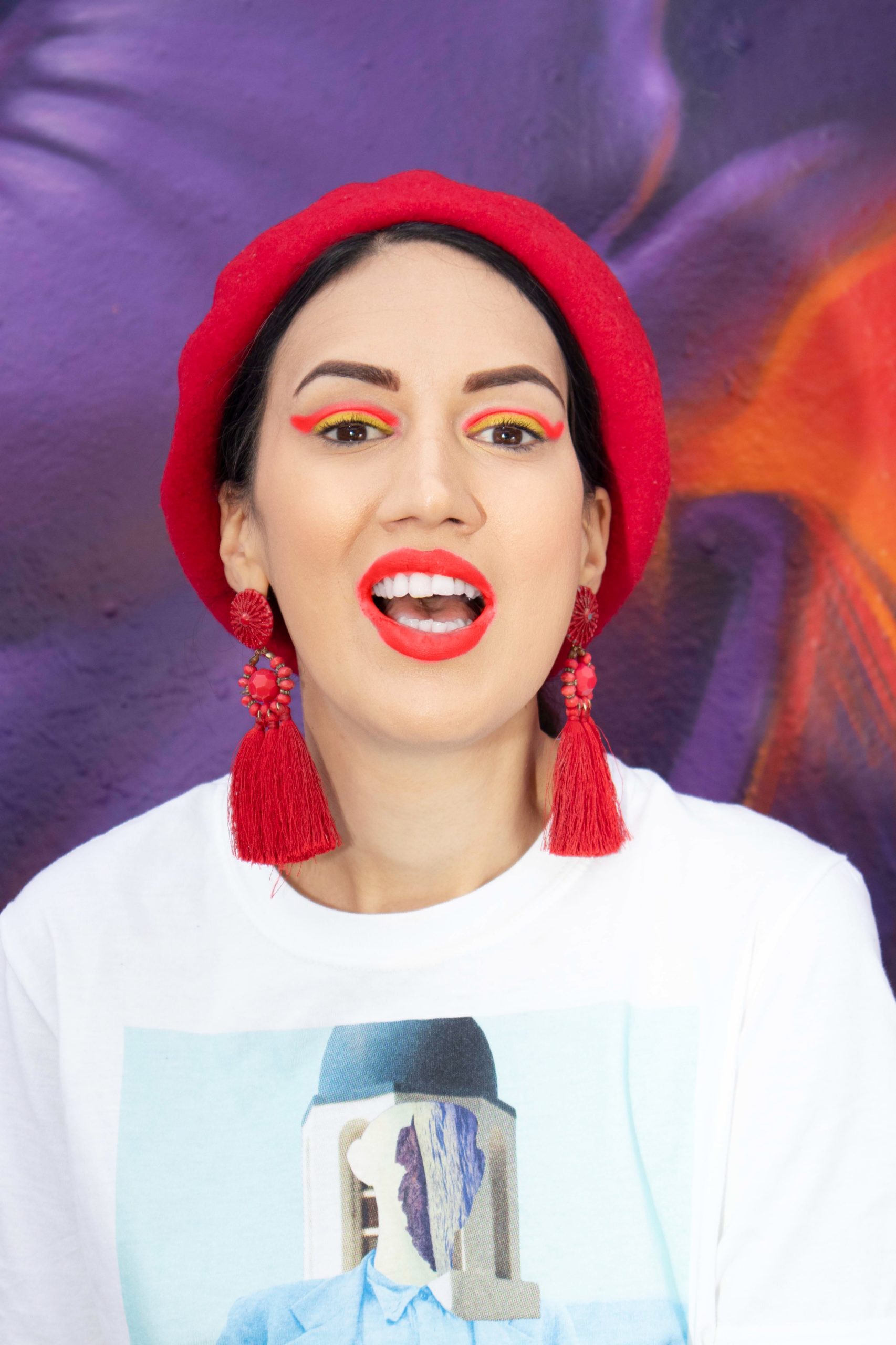
When it comes to laughter, joy and happiness connecting with others is crucial. That is why art can boost your mental health because it helps you find ‘your people’.
When I create art, it helps me feel connected, grounded and centered. Even if I am on my own, the arts helps me feel less alone, disarming loneliness with one swift sketch, crossing out the pain swiftly. Although there were opportunities for me to do art with others, there were times when I needed my space, to create, feel, and heal. What I was going through was ugly, but in a beautiful, tortured fashion, a gaggle of demons who needed to be excorcised. I retreated into the shadows, licking my wounds, squinting at my canvas in exasperation, wondering what I would paint. And then it came to me, I was sat alone on a bench in the dead of night, the stars lighting up the sky. There was noone around me, only darkness and stars, a small hint of grass glinting under the street lights. It was so simple, and yet there was meaning here. I compared it to an earlier painting, me having a panic attack in a crowd of people around me, my vision blurred, how the two were interconnected. The stars represented peace, calm, and tranquility, and the crowd was overwhelming. Together both opposites showed how I needed to strike a balance between having too many people around me, and being alone.
I didn’t want to be alone, but I didn’t want to be surrounded by fake friends either. Art showed me the path to leading a more connected, more fufiling life, where the friends I chose were true, kind, and geniune friends. Through the dark times, and the good times, they remained steadfast, proving their loyalty, again and again. Because that is what a true friend is, someone who loves and appreciates you for who are, and dosen’t run when things get tough. Who is a shoulder to cry on, when the tears engulf you hungrily, and lets you wipe those tears on their sleeve. Despite the bubbling snot, they love you no matter what. Because that is what art shows you, that its better to have people at their worst, than not at all. Even when someone is hurting, don’t turn your back on that pain. Live, love, help, in that order. Art shows that there is strength in the ugliness of trauma, that your wounds are not a parody of your life, but an open book waiting to be rewritten with happier memories. When we create, and even when we create with others, we feel like we are more sociable, more worthy of friendship.
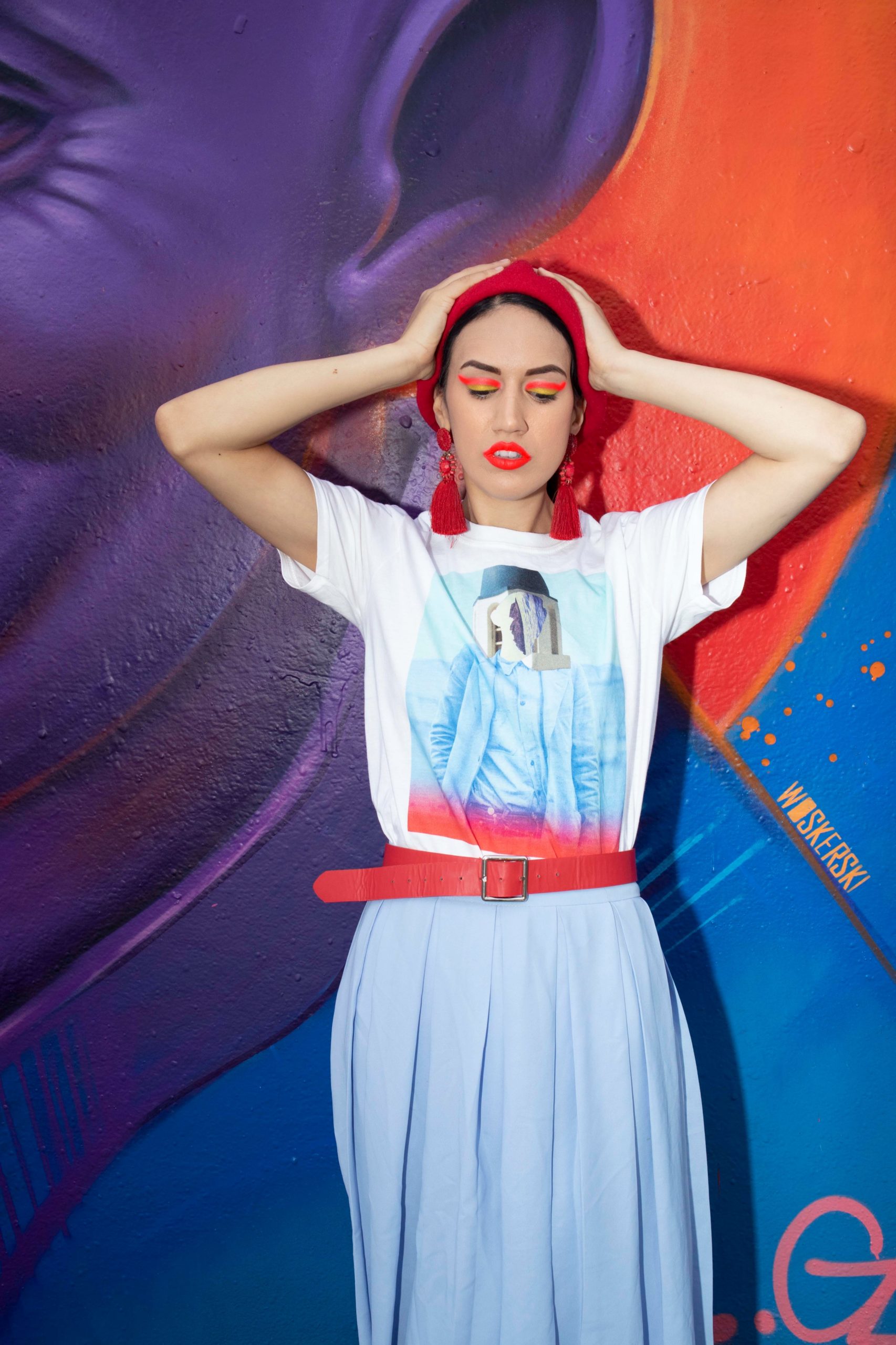
We acknowledge that we need our alone time, but at the same time we need friendship too. Creating art can boost your mental health, and make you feel more connected in the process. We feel liberated from loneliness because art helps us find new friendships, and also recapture old ones. It shows us to not hold grudges, but to forgive and move on, acknowledging that people grow, and people change, that growth is real. Because life is too short to hold hatred in our hearts, our clocks run out before we know it, and we don’t want to live a life that is marred by regret. Patch up those old friendships, if its worth salvaging, find new friends that make your heart smile, and above all stay connected, whether that be going to art therapy, attending art class, or even a wonderful wine and paint night, giggling into the evening. With art, you can heal and find platonic love again, manifesting the kind of non-toxic friendships that would make your heart glow. And isn’t that the most magical feeling of all?
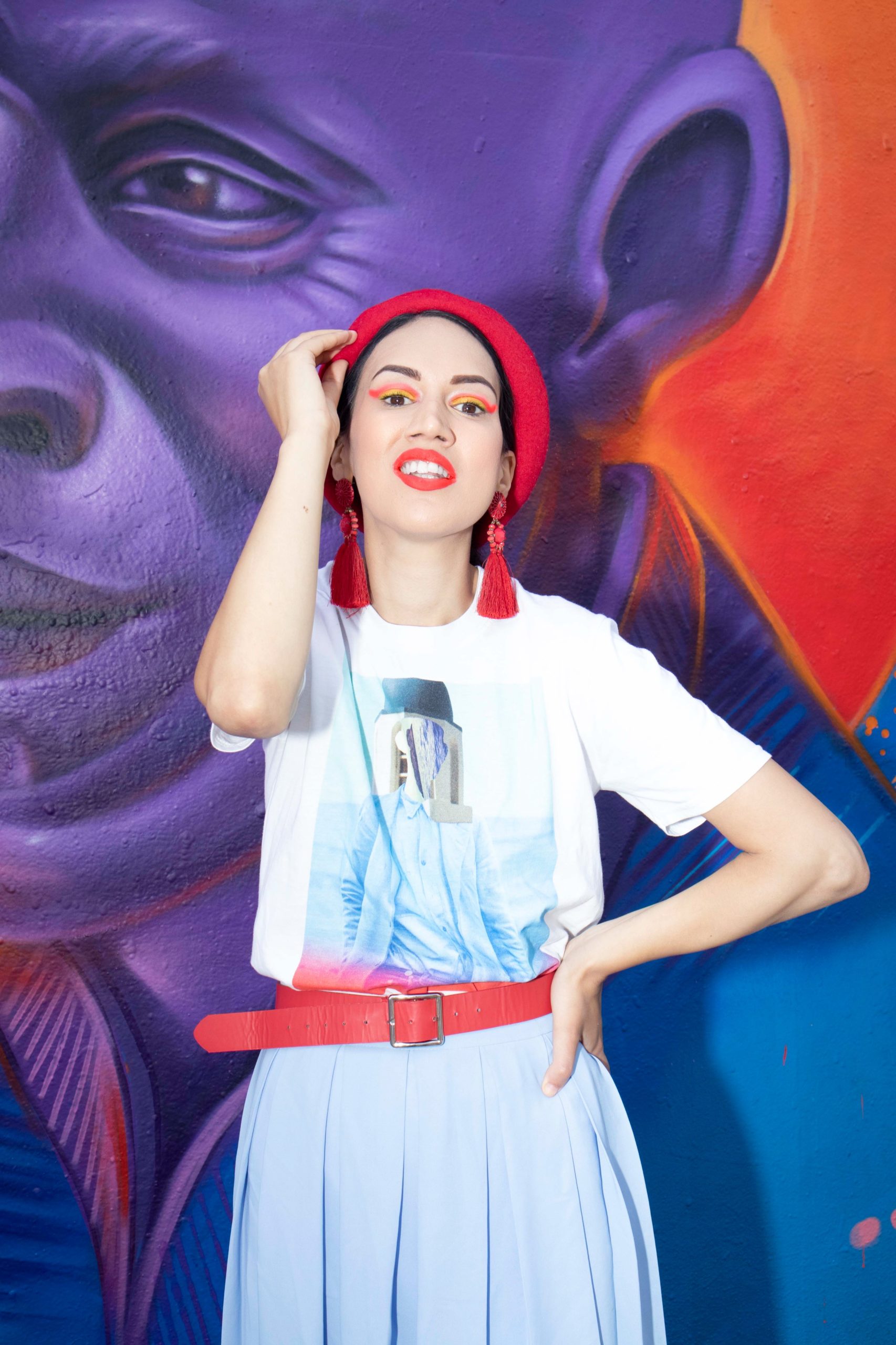
Art can boost your mental health as it helps you connect with others, helping you feel less lonely. Even if you are not a social butterfly, we all need time to develop relationships with others.
How Does Art Boost Your Mental Health?
*Disclaimer
Please note this is a collaborative post but all thoughts are my own and are not affected by monetary compensation. I would love to know how art has helped boost your mental health, and whether you are an artist yourself. Do you love to draw, paint or sketch? Are you a graphic designer, or interior designer? Or maybe you are a super creative photographer. Whatever your artistic superpower, I would love to find out more. Remember, it is ok if you can’t paint to save your life, neither can I. It is not about how good you are, but how good the creation of art makes you feel.
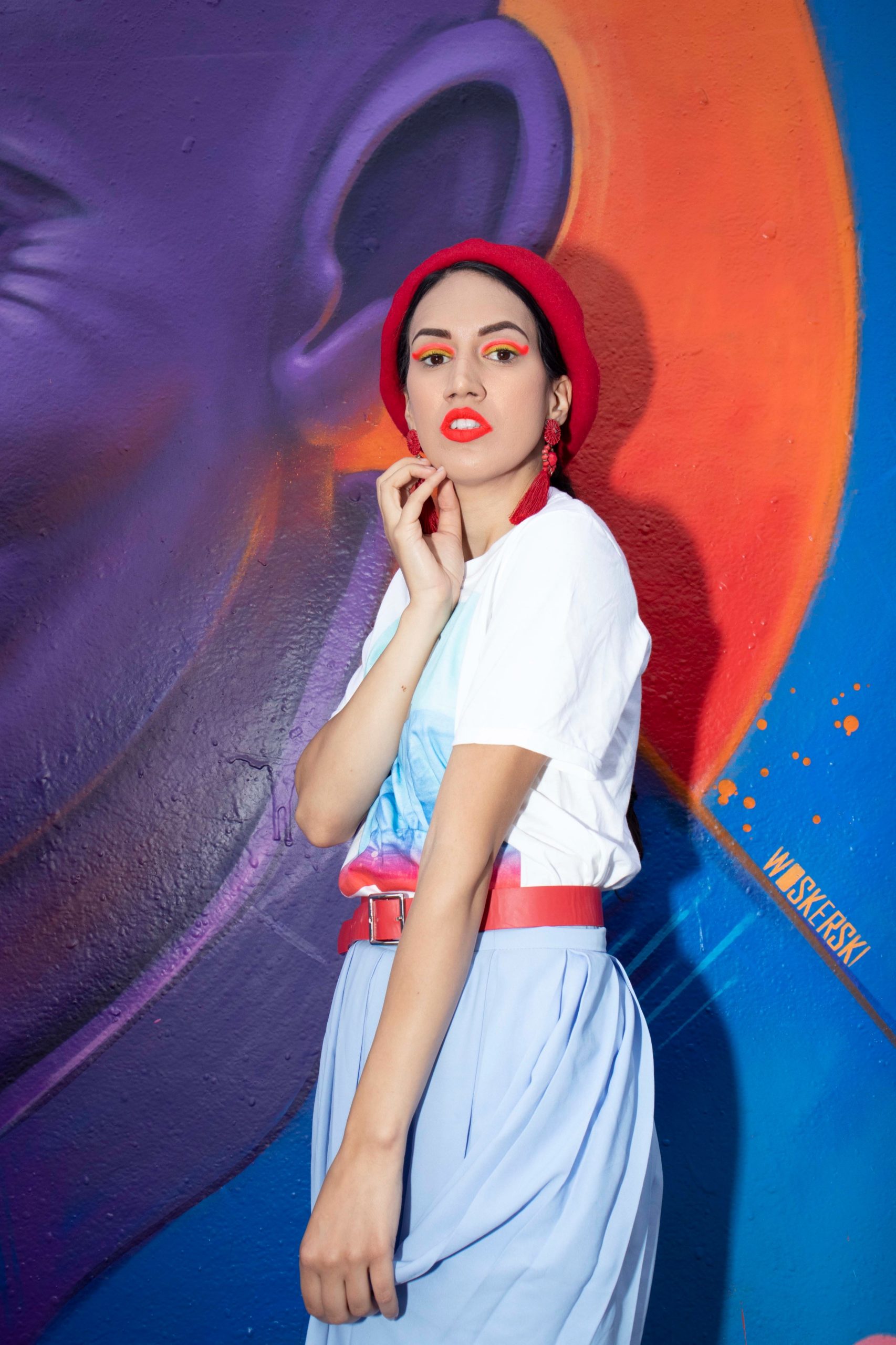
There is something magical about the way that art boosts your mental health. It is transformative and healing.
First of all, the sheer amount you have been through is unspeakable. You are very brave to have overcome such difficult issues such as childhood abuse, depression, and anxiety. Of course I realize you are still dealing with mental health issues but I just wanted to show you how far you have come. You are a survivor, warrior and your story truly brought tears to my eyes. The way you write is so beautiful, and you really should write your own book about everything you have been through. I agree that art is a wonderful creative outlet to boost your mental health, and I myself love to draw as a way of dealing with emotions. Plus your photos are gorgeous, and Nuinx has great art. It is so cool how you are literally a walking piece of art! I checked out Nuinx Art and love their art collection!
Thanks for sharing and for being so open. I never considered myself artistic because I can’t draw or paint but I found my artistic outlet in writing and it has helped tremendously with my own trauma, depression, and anxiety. Keep spreading the light, you look beautiful!
Thanks for sharing and being brave discussing abuse, trauma, and grief! As an artist myself, art does wonders for creativity and mental health.
Thank you for sharing your story. You are a gifted writer and a beautiful woman. I used to draw and paint when I was a young child. I never grew tired of drawing trees. In my early twenties, I studied art history. My dear friend from college accompanied me to the MET, MOMA, and all of the galleries in between. As an adult, my focus shifted to graphic art, design, and desktop publishing. When my son was born we created art daily. After we purchased our first home, I nurtured a cottage garden and a backyard wildlife habitat. My husband and I dabbled in home restoration and Interior Design. I fell in love with antiques which I filled our home with. Today, my house is brimming with French antiques, chandeliers, plants, floral paintings, alabaster walls, shabby chic remnants, books, and Italian toleware. Your post has inspired me to draw a tree. Your light is bright and I can see it reflected in your words.
Thank you for sharing how art can improve mental health! I also enjoy street art. My creative outlet that brings peace to my soul is playing my flute. I especially love to improvise when playing with a group of musicians.
Wow. You’ve been dealt with some pretty awful situations in your life but you have conquered everything like a champion. I’m glad to see art has been so helpful to you. I’ve always found that I feel best when I do a visit to an art gallery or museum.
Art is powerful. I suffered from deep depression when I was a kid as my brother was killed in a car accident. I remember doing art in the hospital.
I am learning about art and artists and I always like to expose myself and my kids to the benefits of all art. It is amazing how it can help mental health as you have shown.
It sounds like art has had a huge impact on you, it is wonderful you have found something that helps your mental health in such a positive way.
Thanks for sharing how art has helped you emotionally, you have been through so much!
Art indeed is powerful. It speaks deeply to your soul. Whether you engage in it or just experience it
I’m glad to know that you have found something to boost your mental health. Here’s wishing you all the best.
I guess art in any form — visual arts, music, written words — can do magic for our mental health. In fact, I consider writing as a form of therapy so I guess that counts.
Wow, you have been through the wars, but you are a champion. This is so well written! Thanks for sharing your relationship with art and mental health!
I never understood before how mood boosting art and creativity can be!!! I was disdaining the word ‘creativity’ like an ass before I found your blog. From today I will value art and creativity by being inspired by your mental health journey and applying it to my own.Thanks for your fantastic piece of content! Nuinx art has great art pieces as well!
I love your site and love your positive energy and although I have no artistic bone in my body…. I appreciate good art and the artistic ability and beautiful pictures do make me happy. I always love your pictures!
What a fabulously in-depth article. You are very brave to open up so much to the world. I have always considered art and crafts to be great way to help with mental health but mainly in doing them. To consider how viewing art can help is a real eye opener for me.
Thank yo so much for sharing all this with us.
Love this so much, it’s important to know the things that can help with mental health and to immerse ourselves in those things, both in good times and in bad. Art is a great mood booster, and your photos with your Nuinx art is beautiful!
Mental health issues are real and it is amazing to discover how one can overcome them through art. Thanks for sharing.
Wow! Is all I can say for now. Thank you for sharing your story. Your pictures are fantastic. You are tough and brave. Keep going
Thank you for sharing all this about you, I really enjoyed reading this post. I really like drawing even if I don’t consider myself a creative person, I notice that when I express myself in a figurative way, it makes me feel very good about myself!
I agree. Art can be very therapeutic.
Thanks for sharing this article. Very informative and open. Art can be very relaxing for your mental health.
Thank you for sharing your story. I write when I need to clear my head and it helps a ton.
Thanks for your transparency and for sharing your story, art is such a great outlet.
I wholeheartedly agree that arts and creativity help mental health. That’s why I hope those are the things that never get cut from schools. Kids need it! I need it as an adult.
Art has gotten me back on track many times. I need to get lost in creativity and think about other things.
It is great that art had had a positive impact on your life. There is loads of street art in London which is great to see. Some really amazing pieces.
This is so true. I love art myself. You can really express yourself with art.
I really do believe that creativity can really help with mental health. I love doing crafts and it as helped me with my depression
I so agree with you. All forms of art and creativity boost our mental health and in fact help us maintain a good mental health condition.
Expression through art and music is a great way to help mental health. It makes sense that it is a wonderful outlet for feelings.
Yes Mental health is important. I agree with you. we need to take care of that part.
I haven’t used art to help me with my anxiety but I do find being creative helps. I loved reading this article and always enjoy reading about your experiences and thoughts. It’s great to see your growth over the years and I agree it’s good to forgiver and move on and use heart to help yourself.
Thanks for being brave to share this. I had not perceived art in this light.
Loved this and will be passing on to my wife who works with children in this capacity! Thanks.
I admire your strength and vulnerability in writing this post. I also want to say that you are an incredible writer! Such intelligence and class flow through your writing. I too just started a blog about living in an abusive home as a child and how its impacted every aspect of my adult life. I think its beautiful that you found art to help you cope and learn ways to deal with childhood traumas. I am not an artist but my sister is, I can see the pain in some of her art but mostly I see her soul dancing in the colors and her feeling totally free and at peace when she is paining. I resonate more with music, music and nature sounds calm me and have helped keep my anxiety at bay. Keep up the great work!
What a great form to express yourself through, art, and creativity! I never thought of using art and creativity for relieving anxiety and depression. Thanks for bringing this awareness to me. This is good to know, because my daughter is very artistic, and draws a lot!
Great post!
~Michelle
Thank you for telling your story and sharing. The best way to help others is to spread awareness.
Thank you for sharing! I also find art has helped me out over the years. I especially love gardening and flower arranging. That’s where I feel very creative.
Wow, great story. Art is a great way to destress. I should start this practice. thanks for the insights.